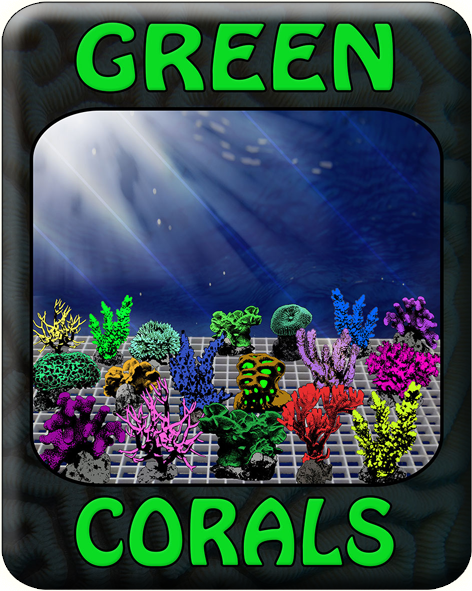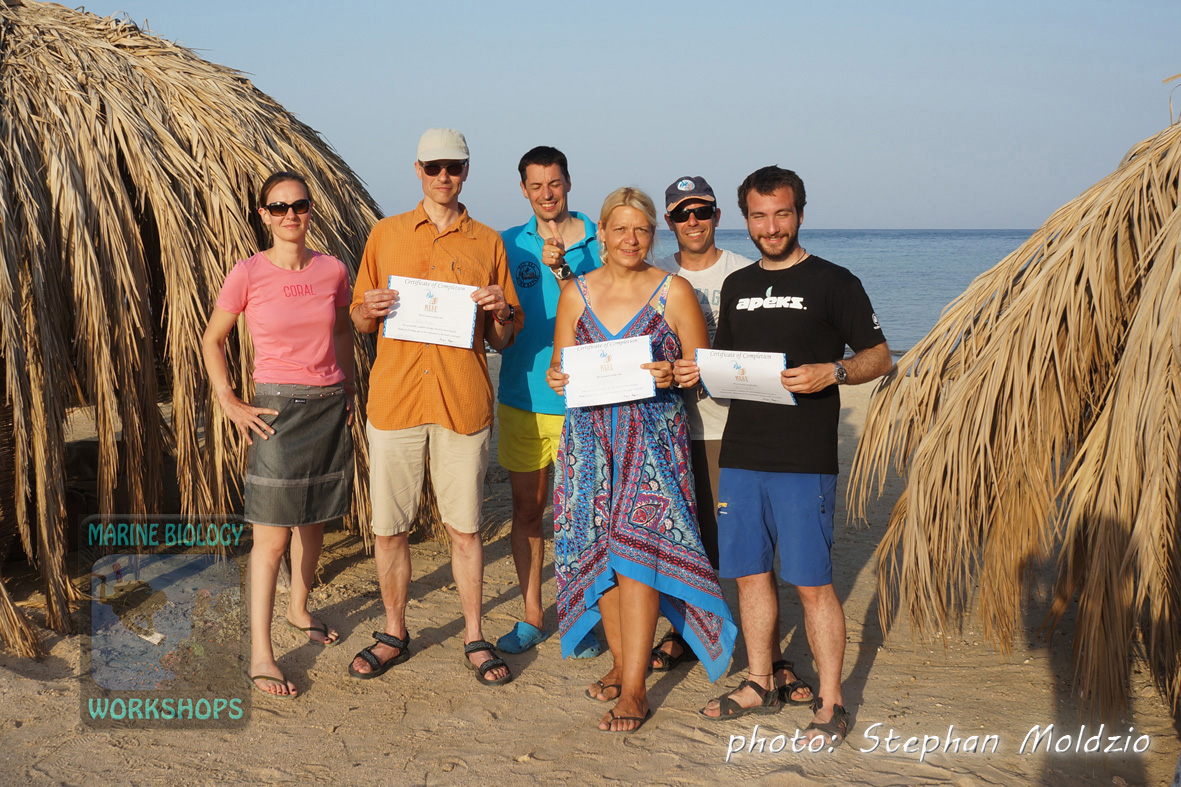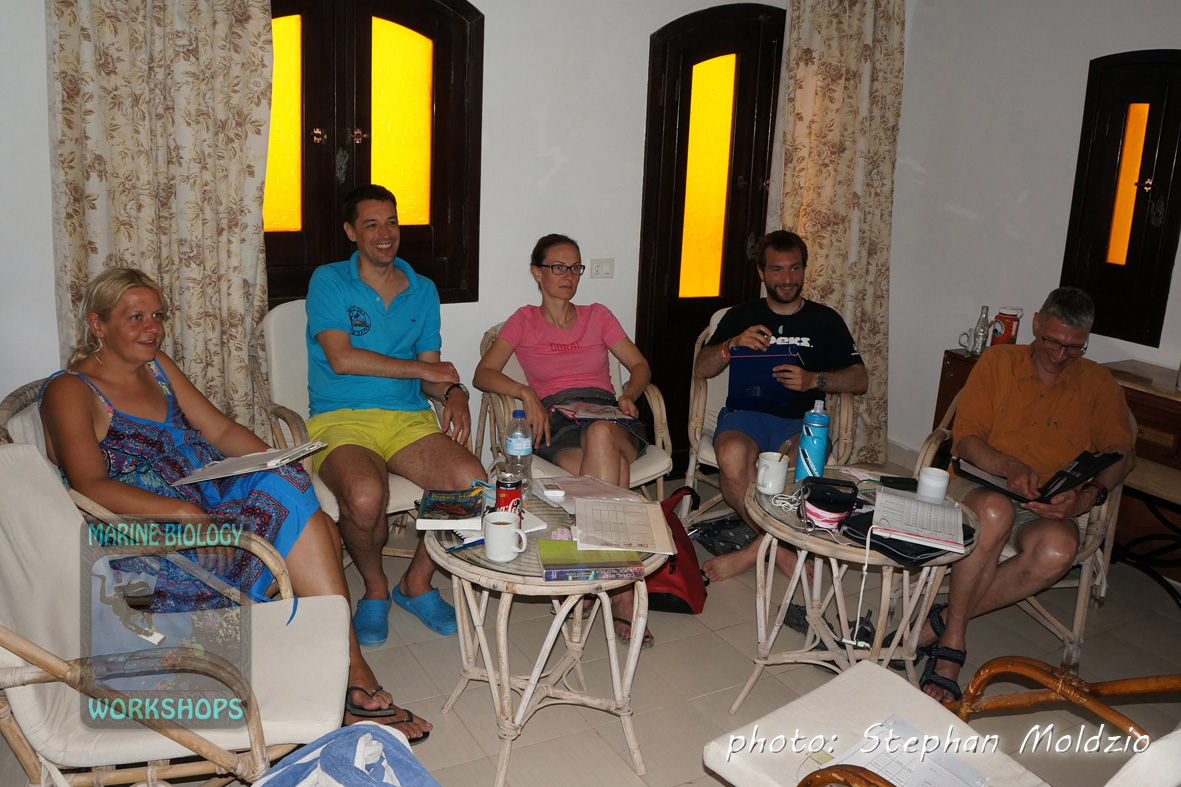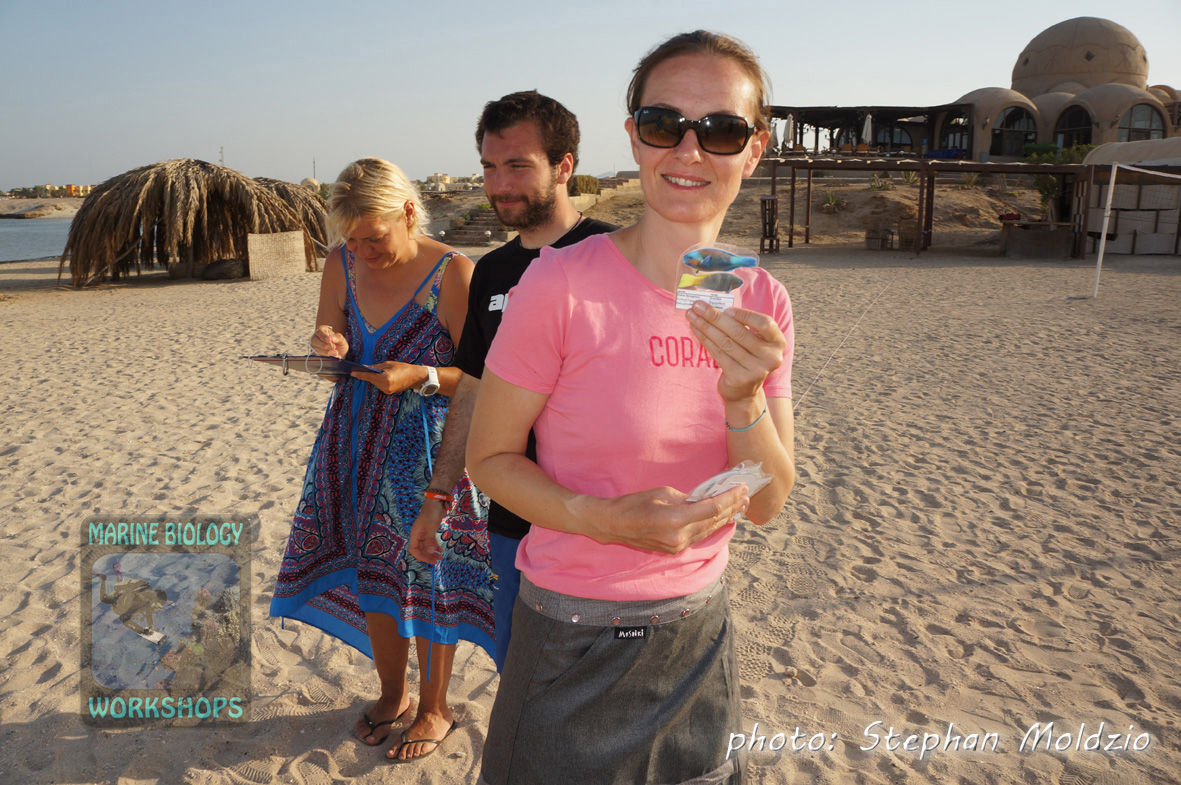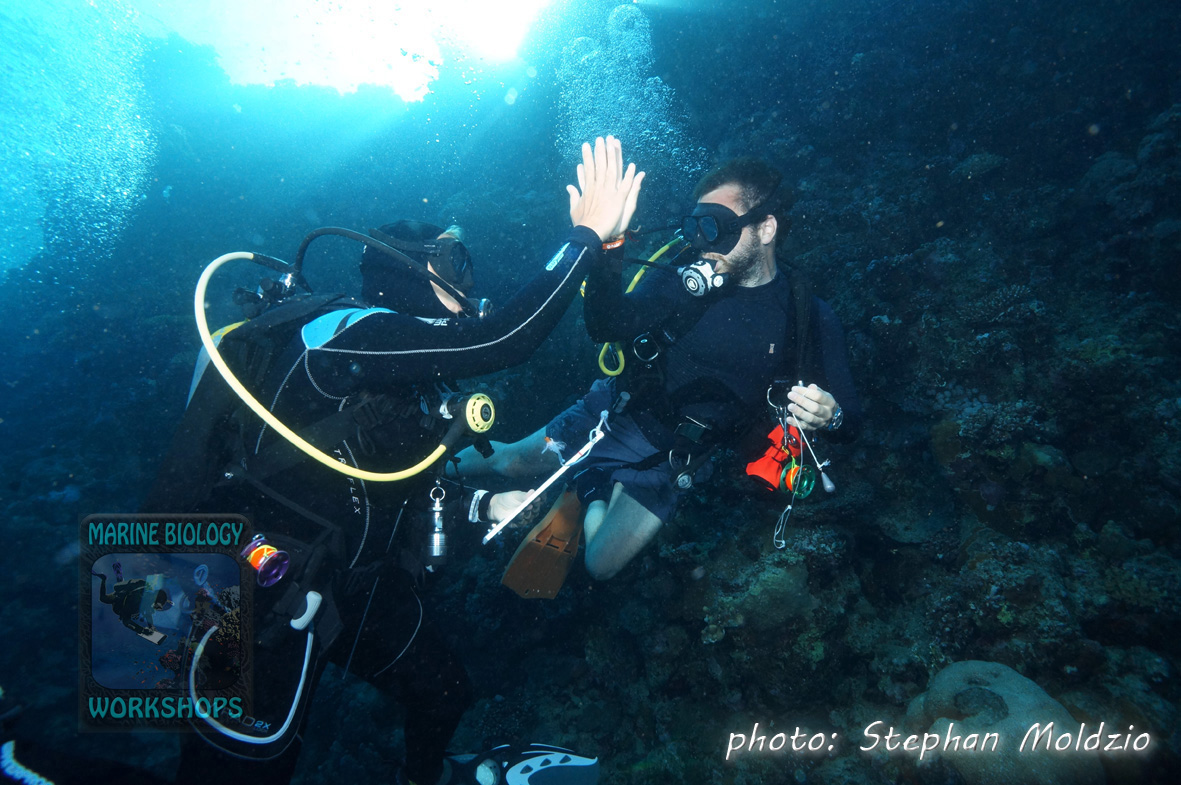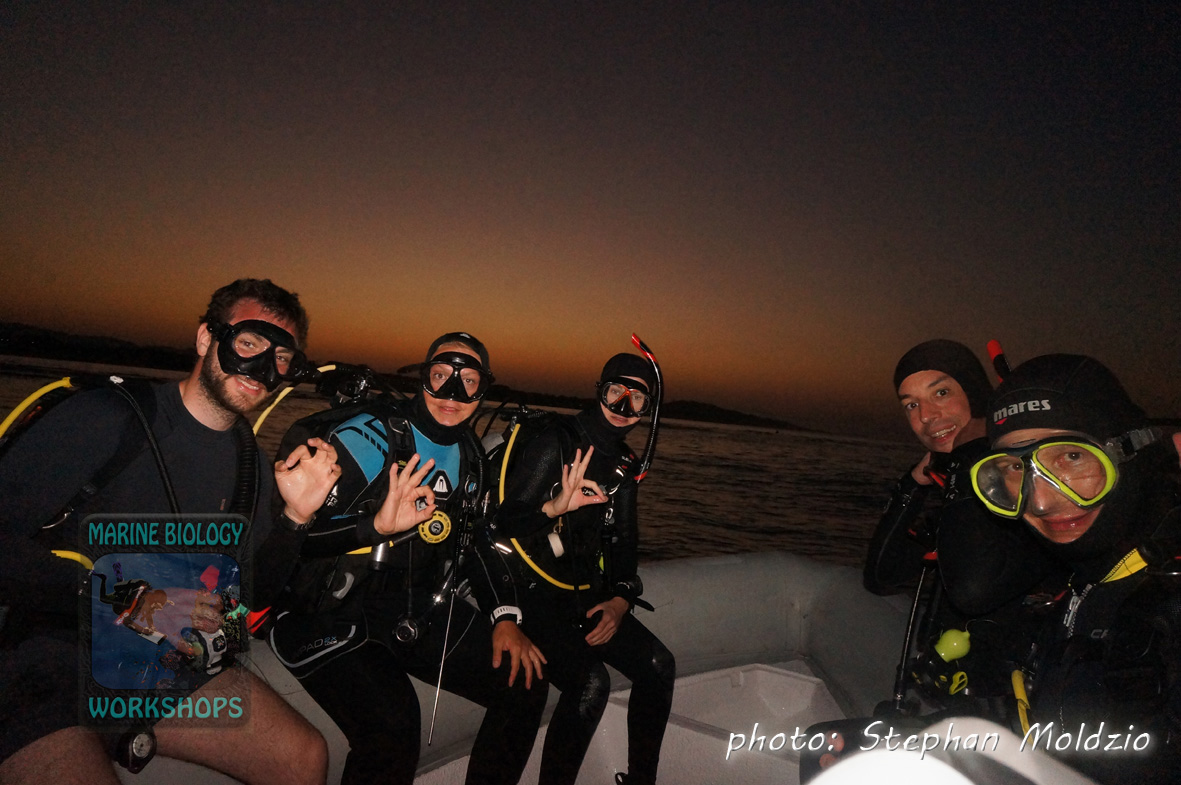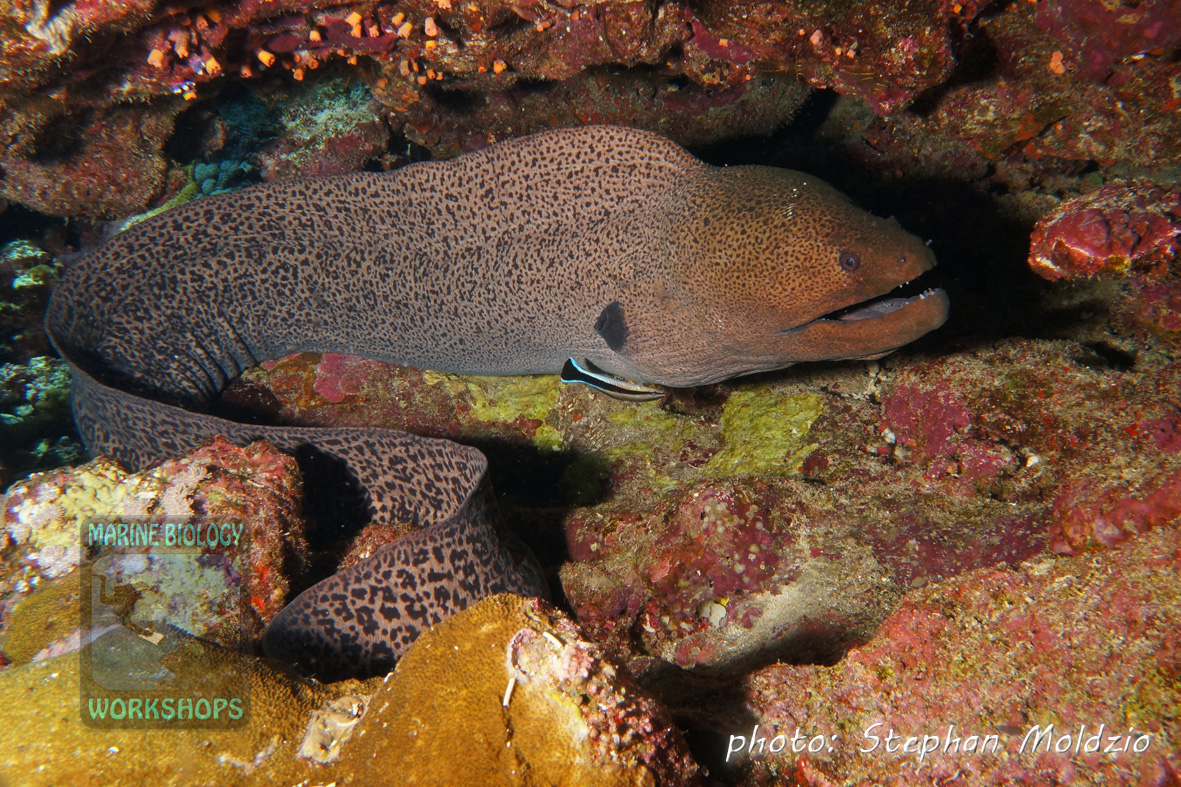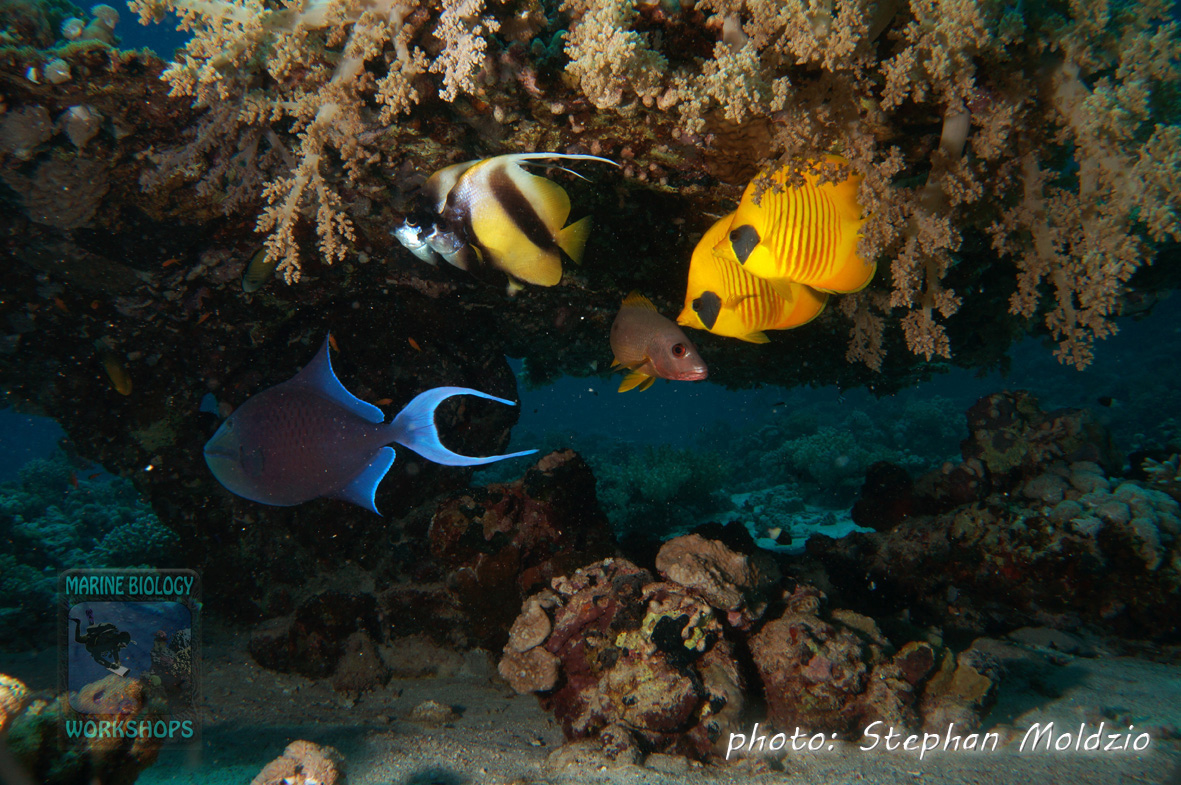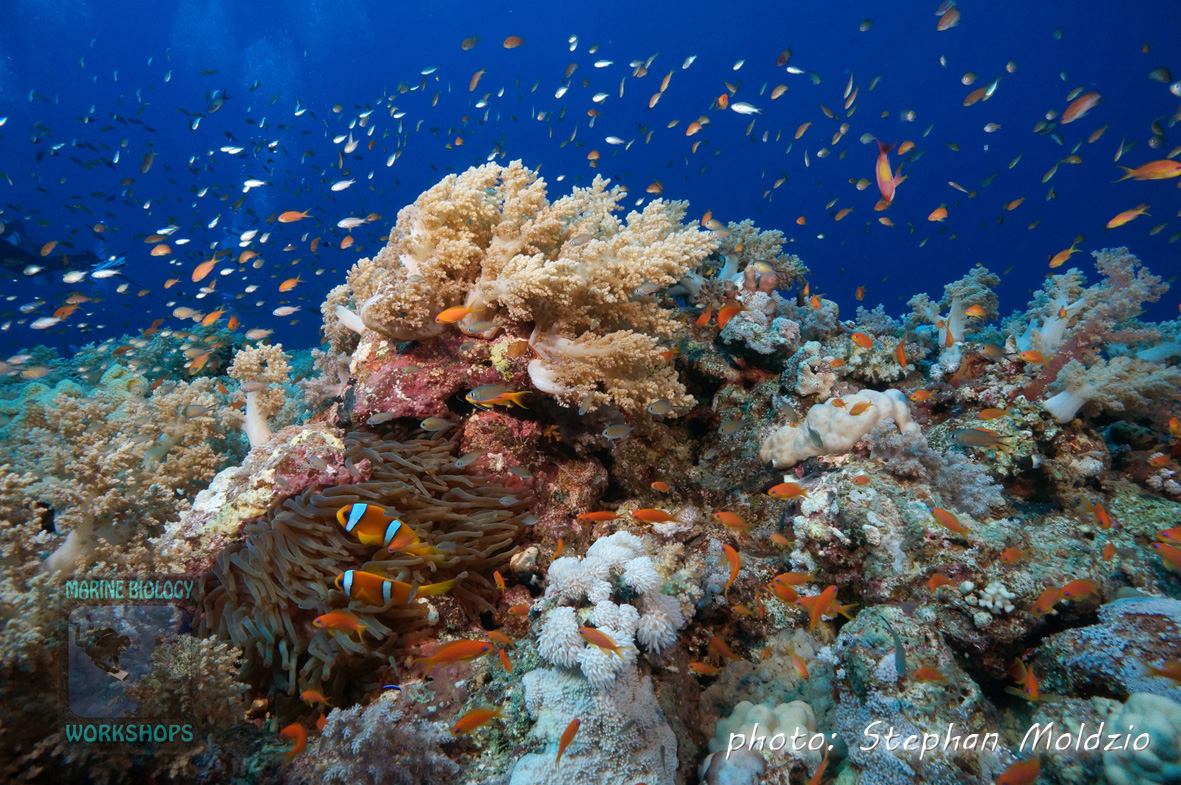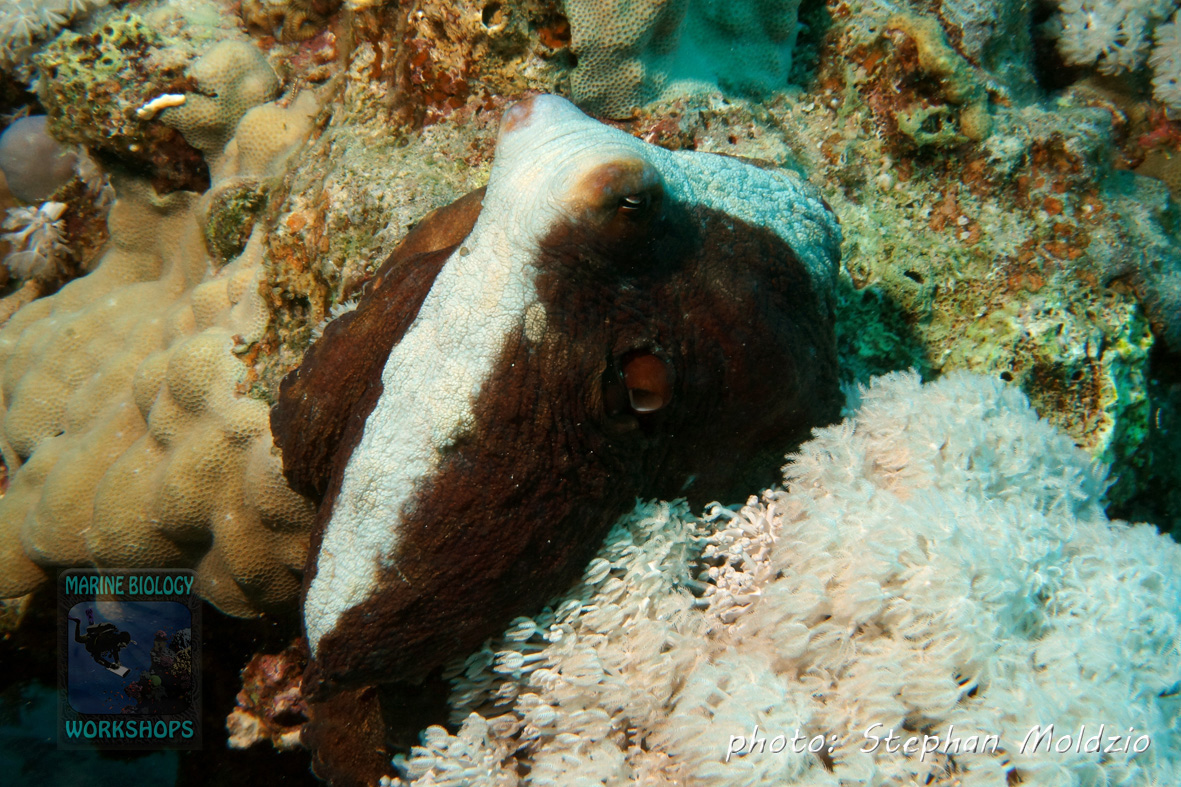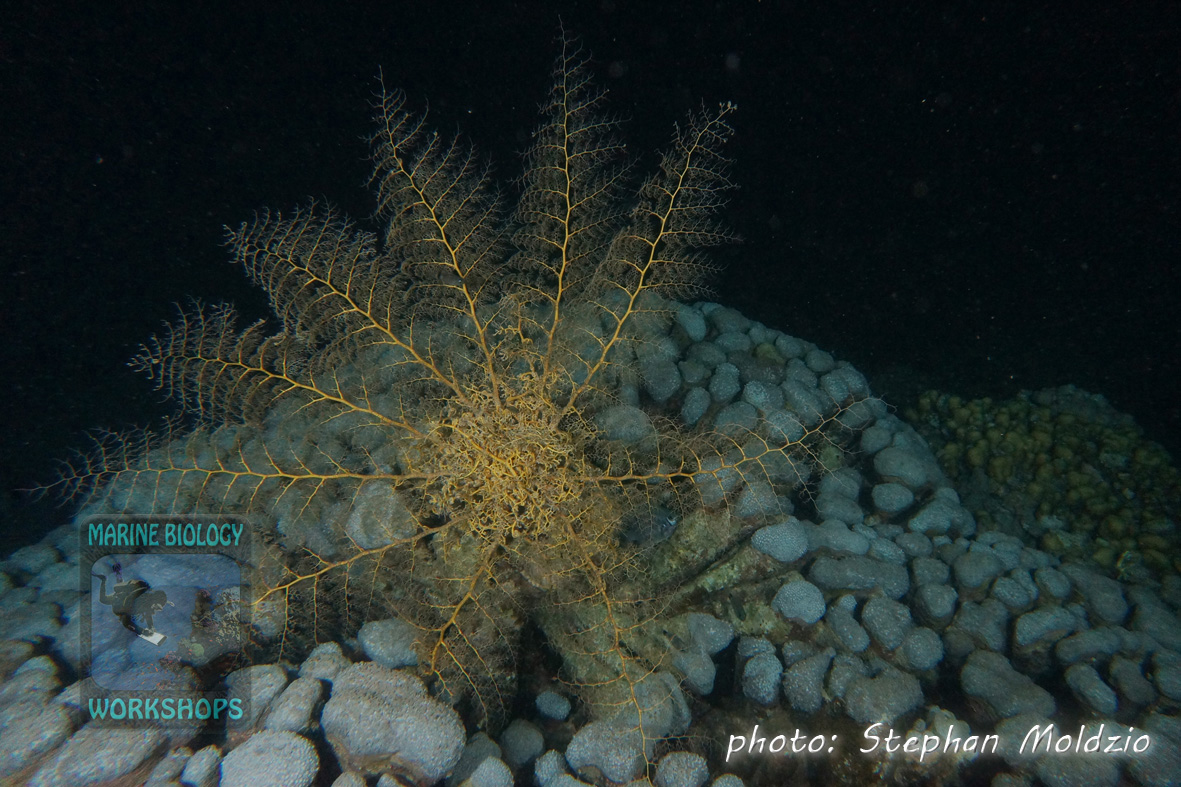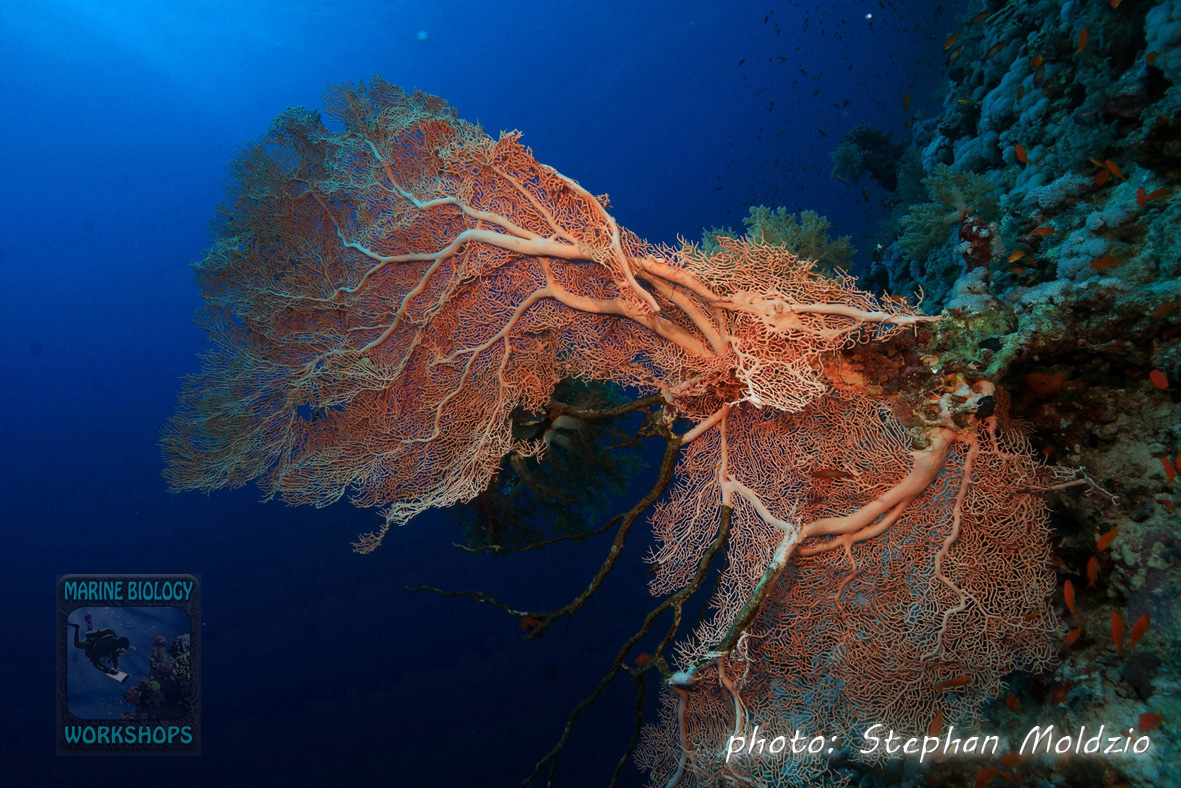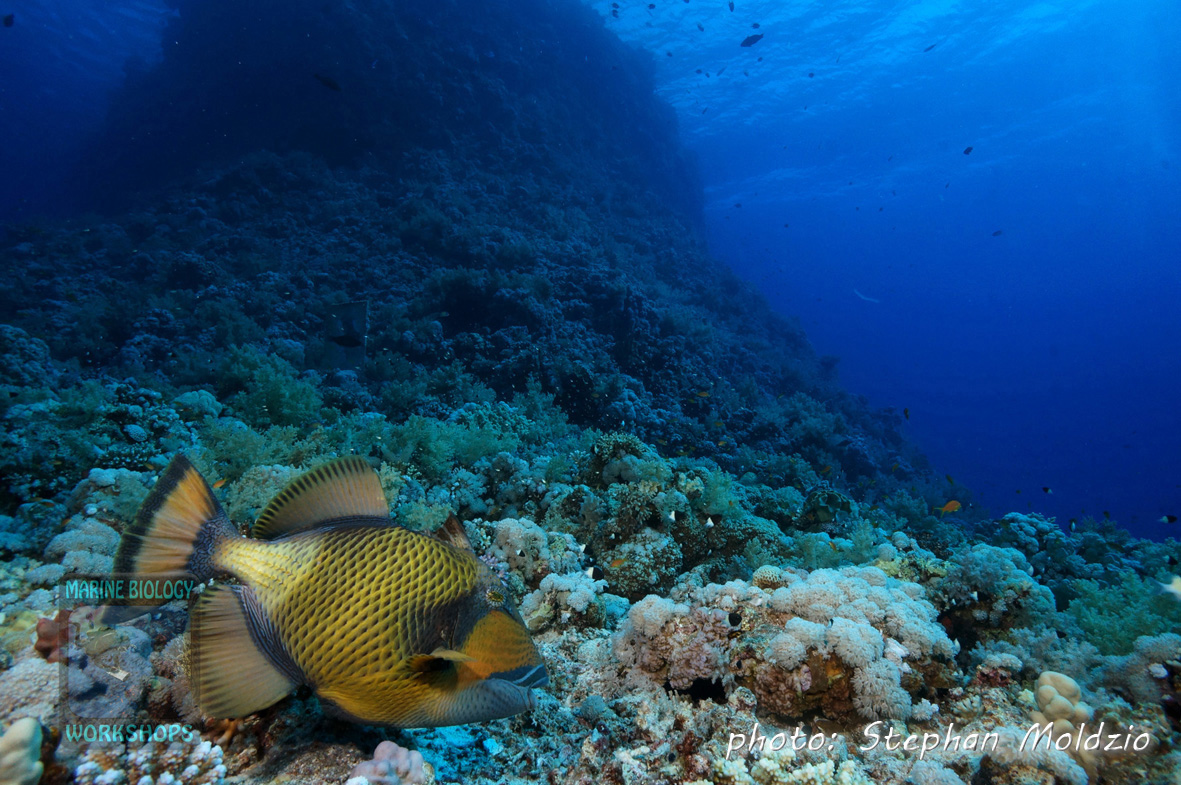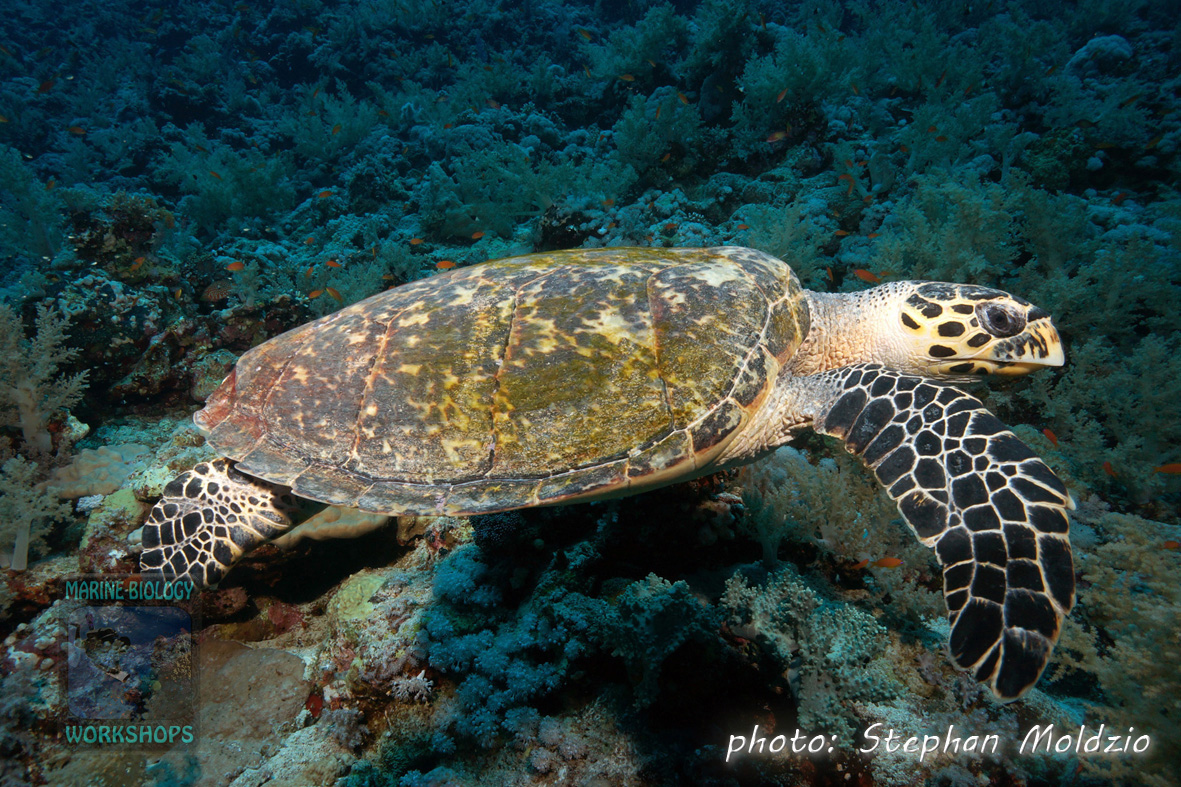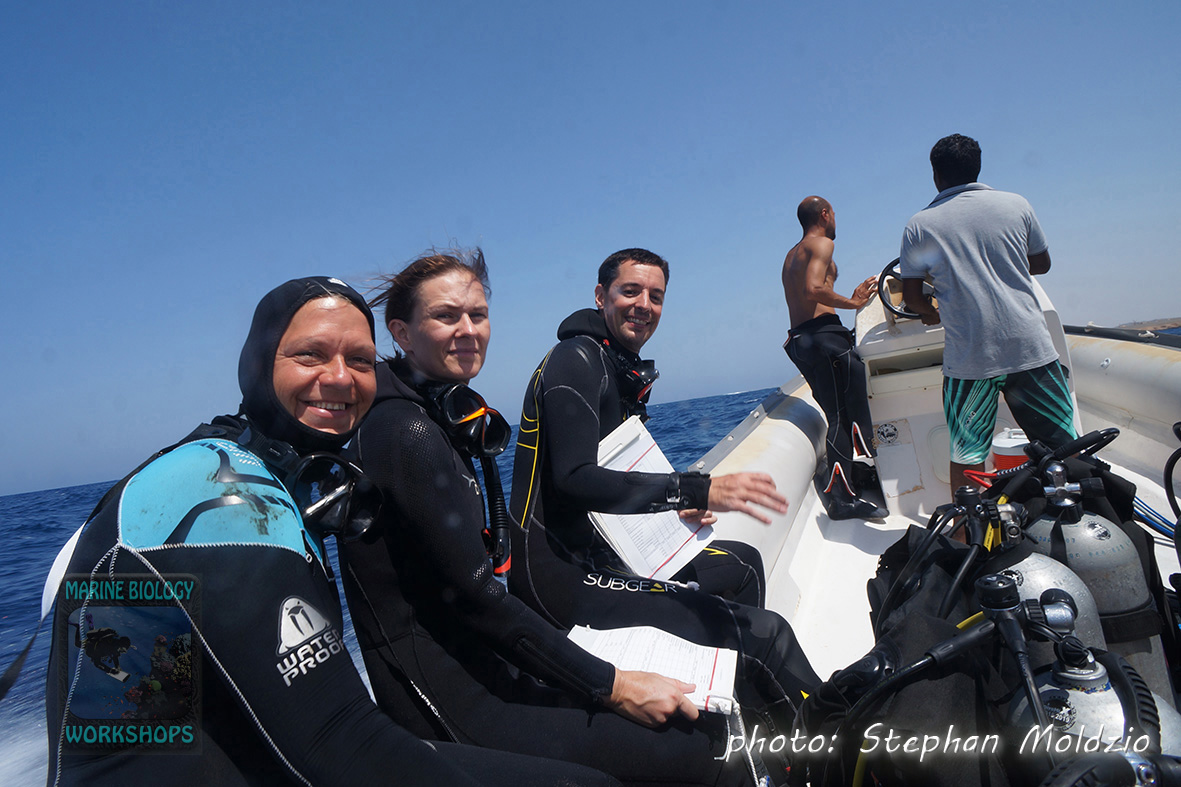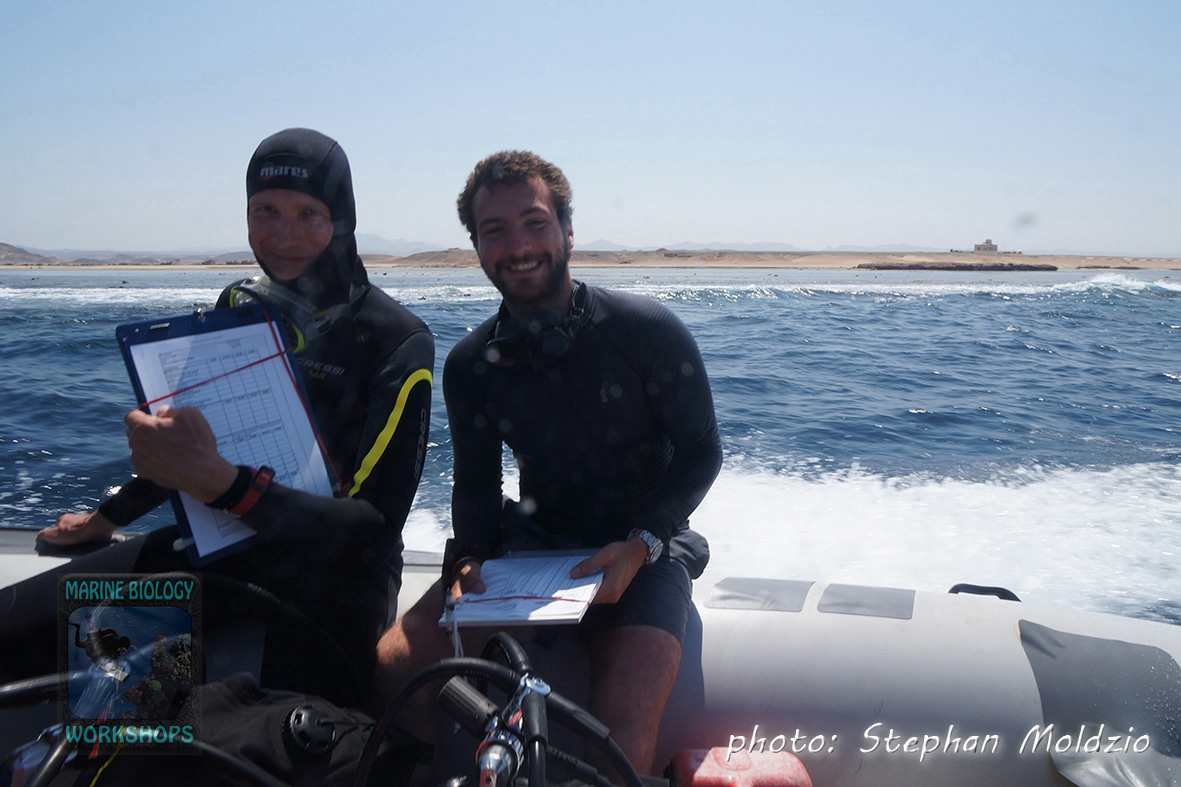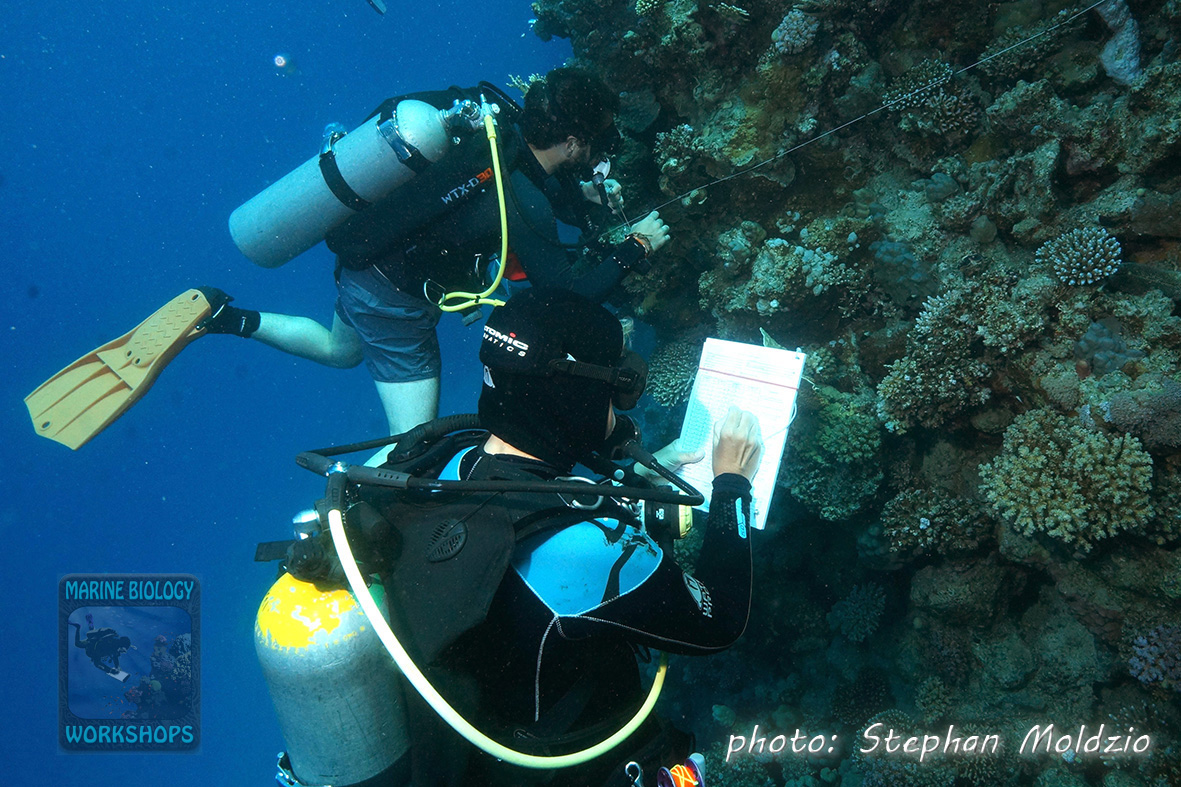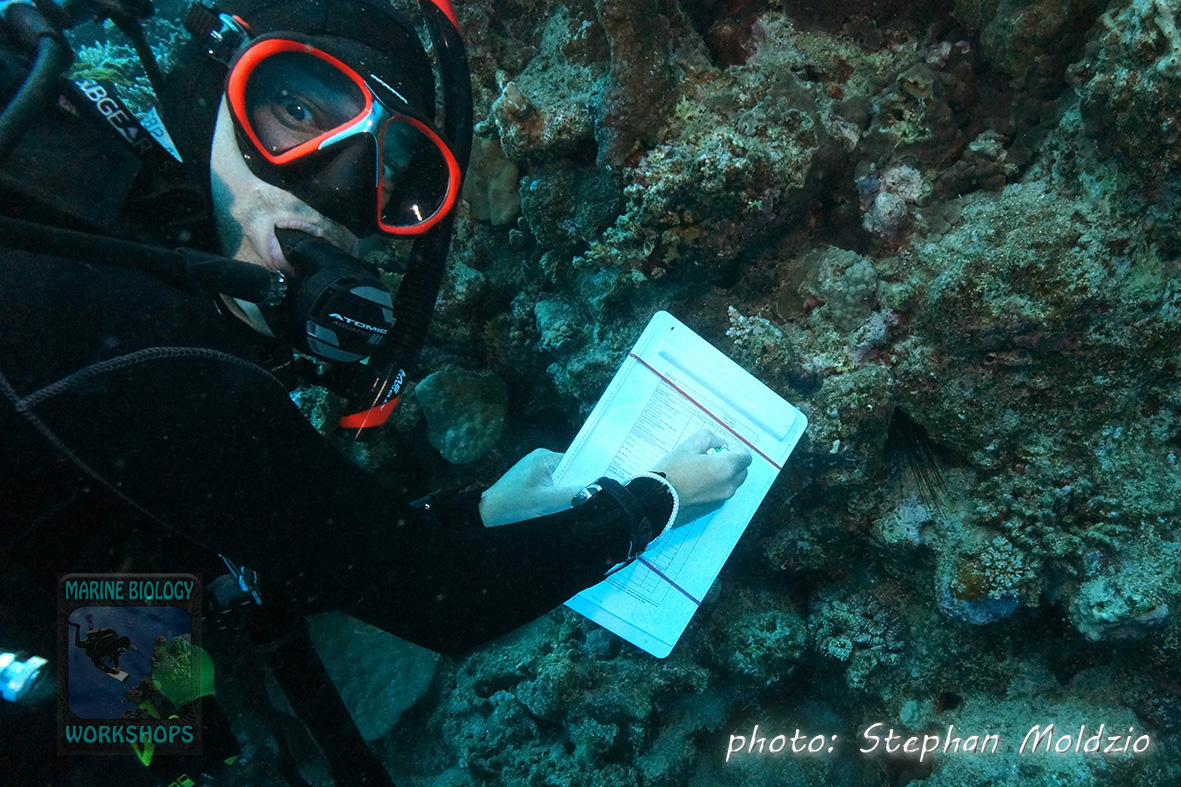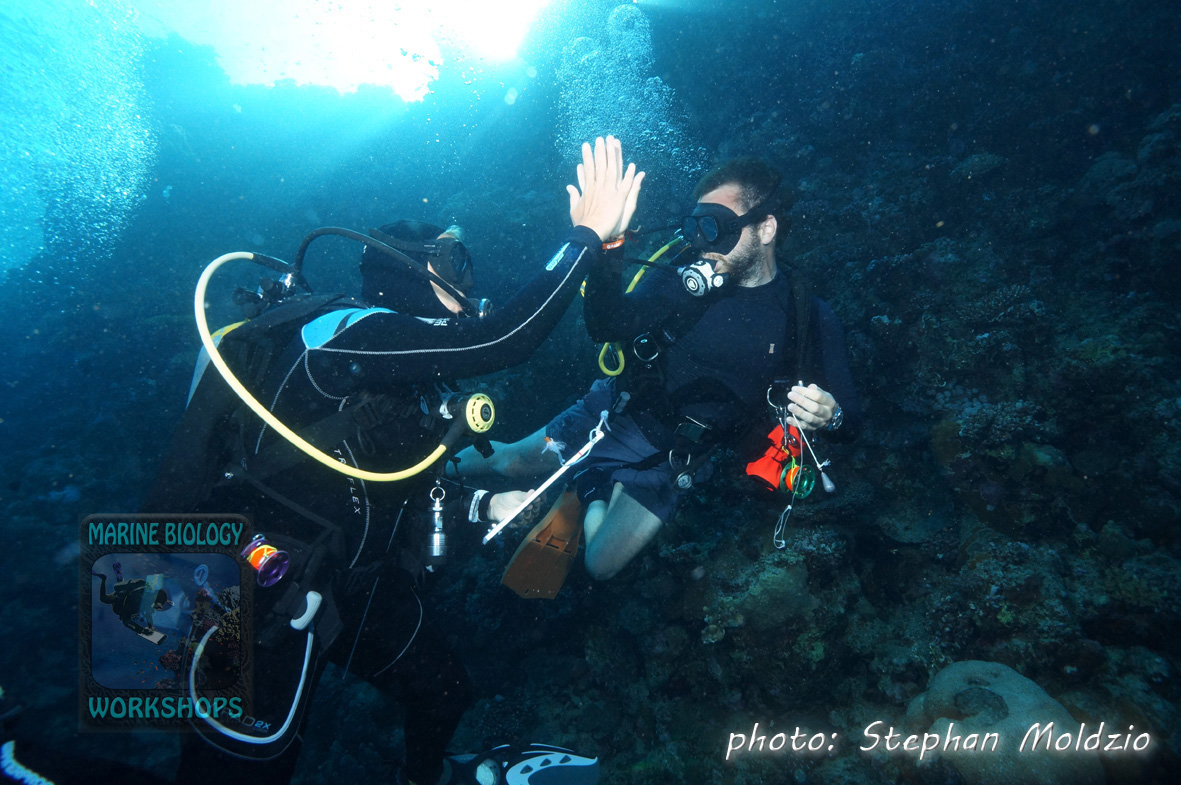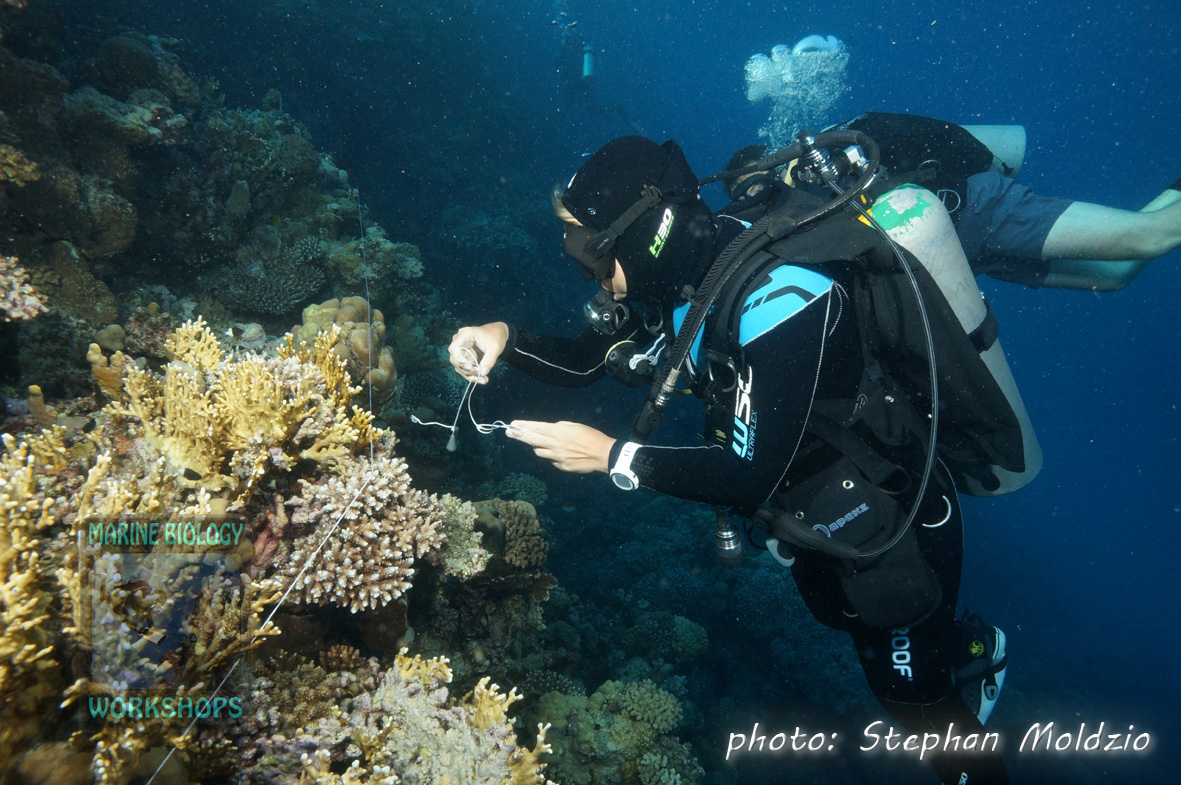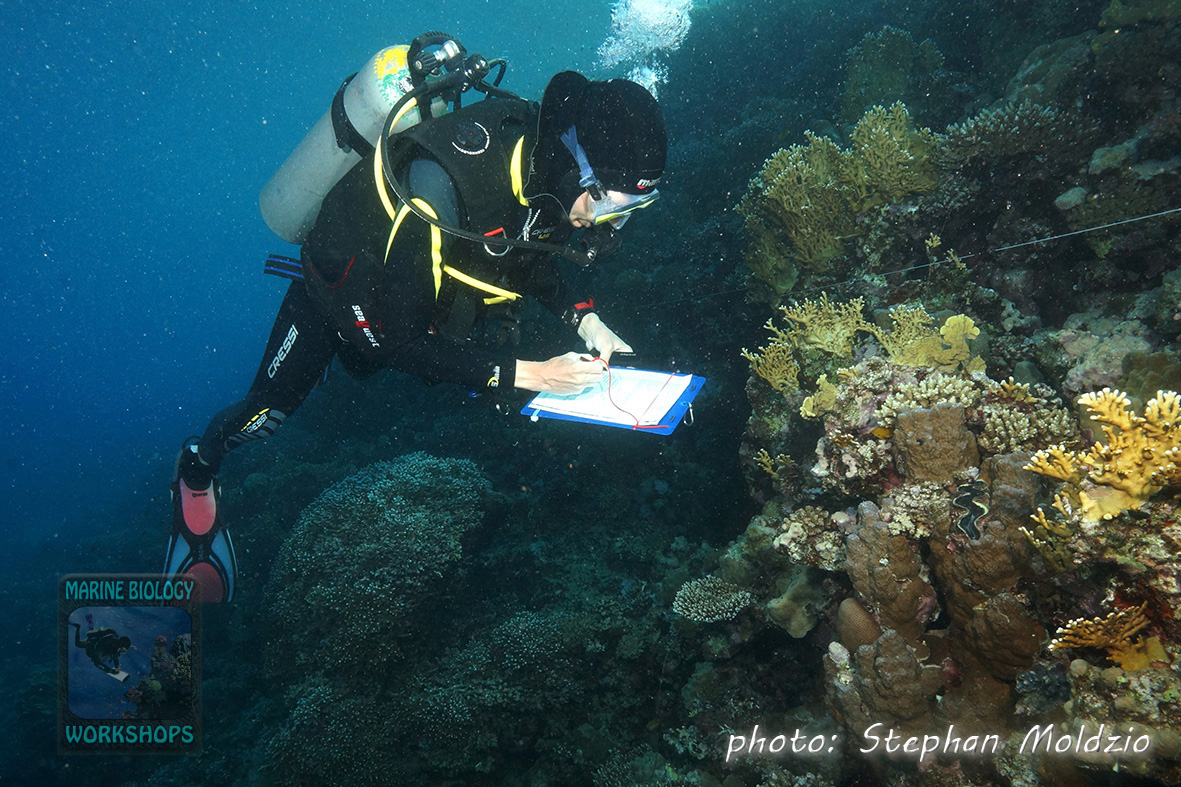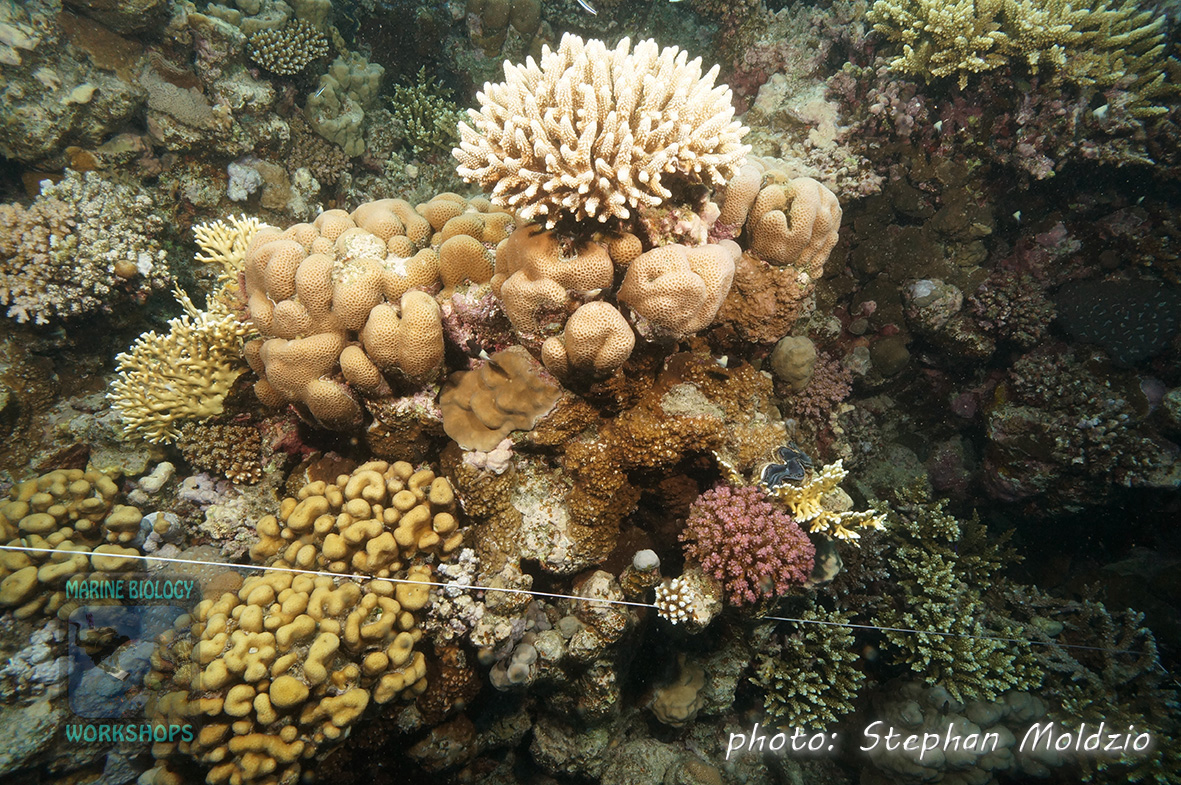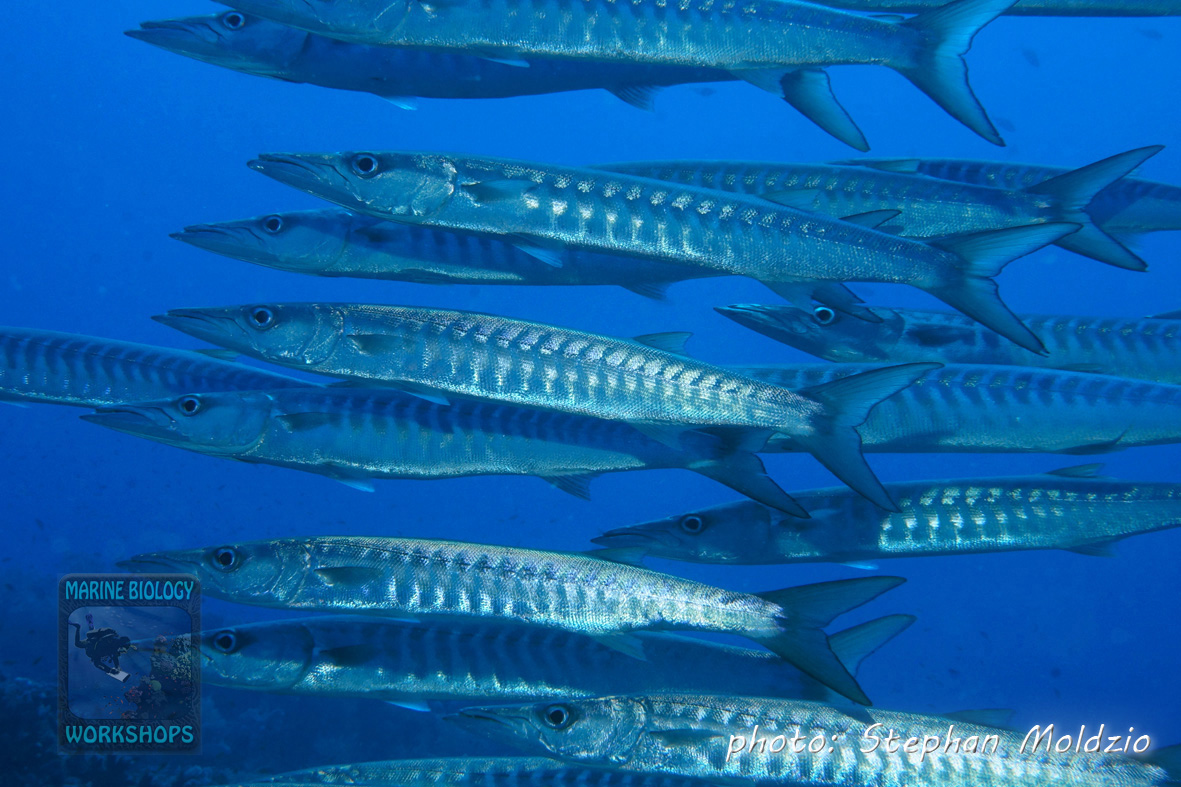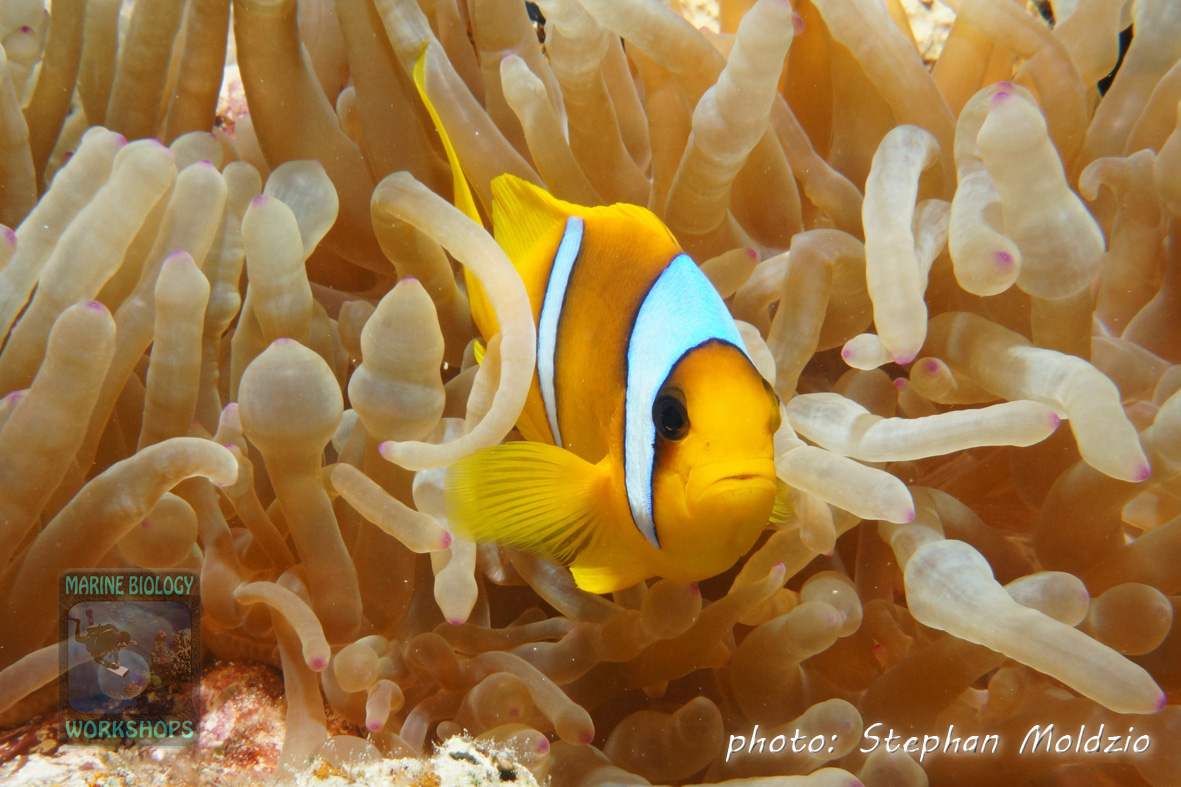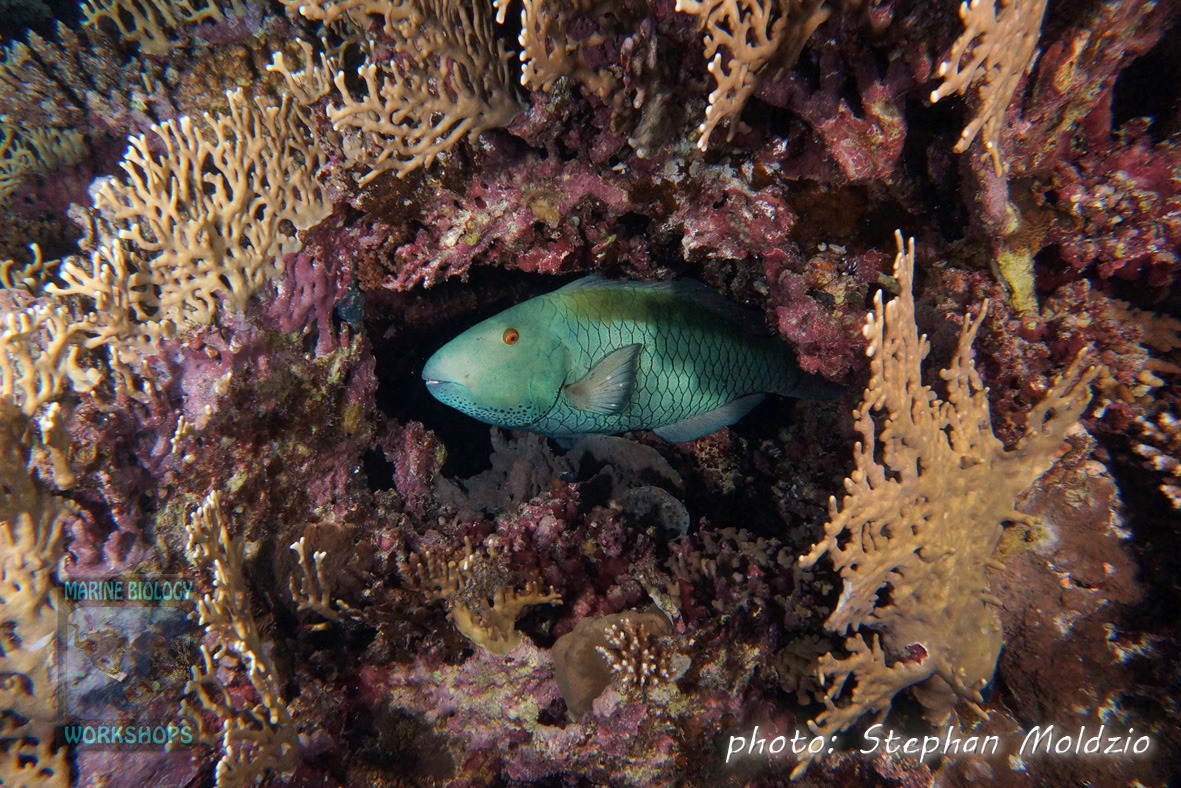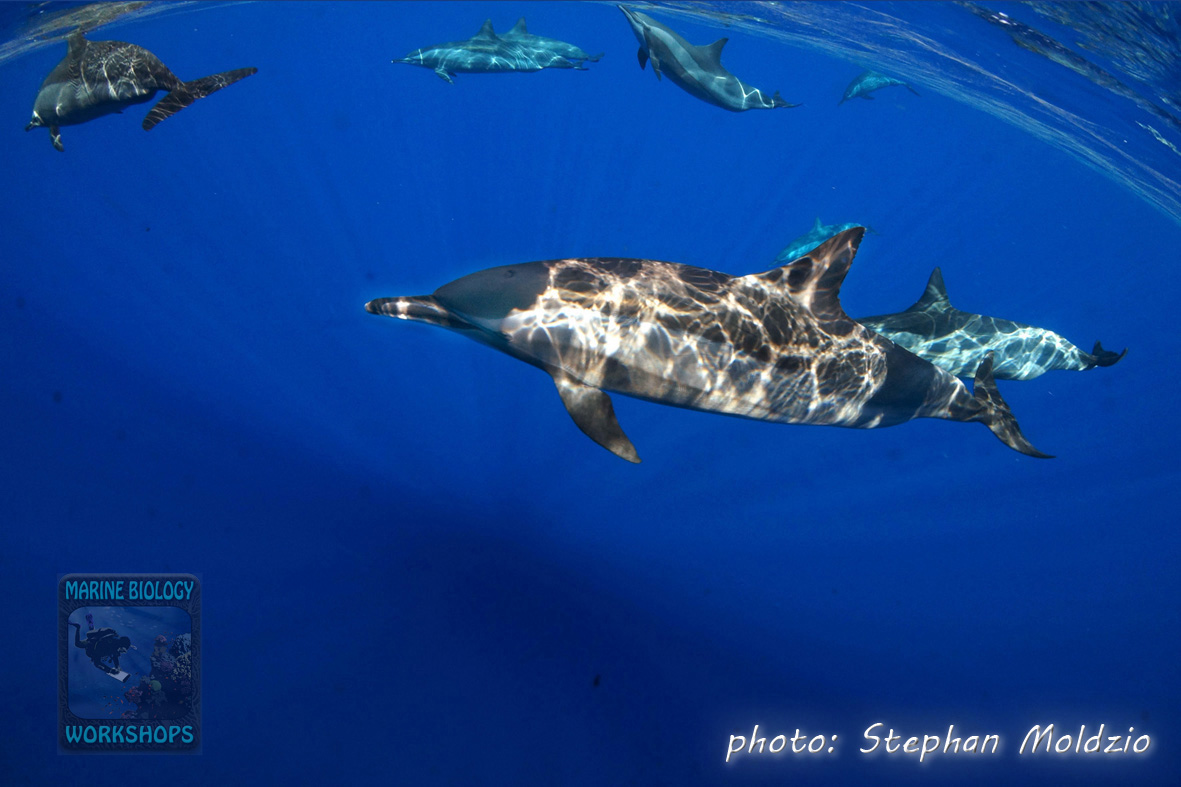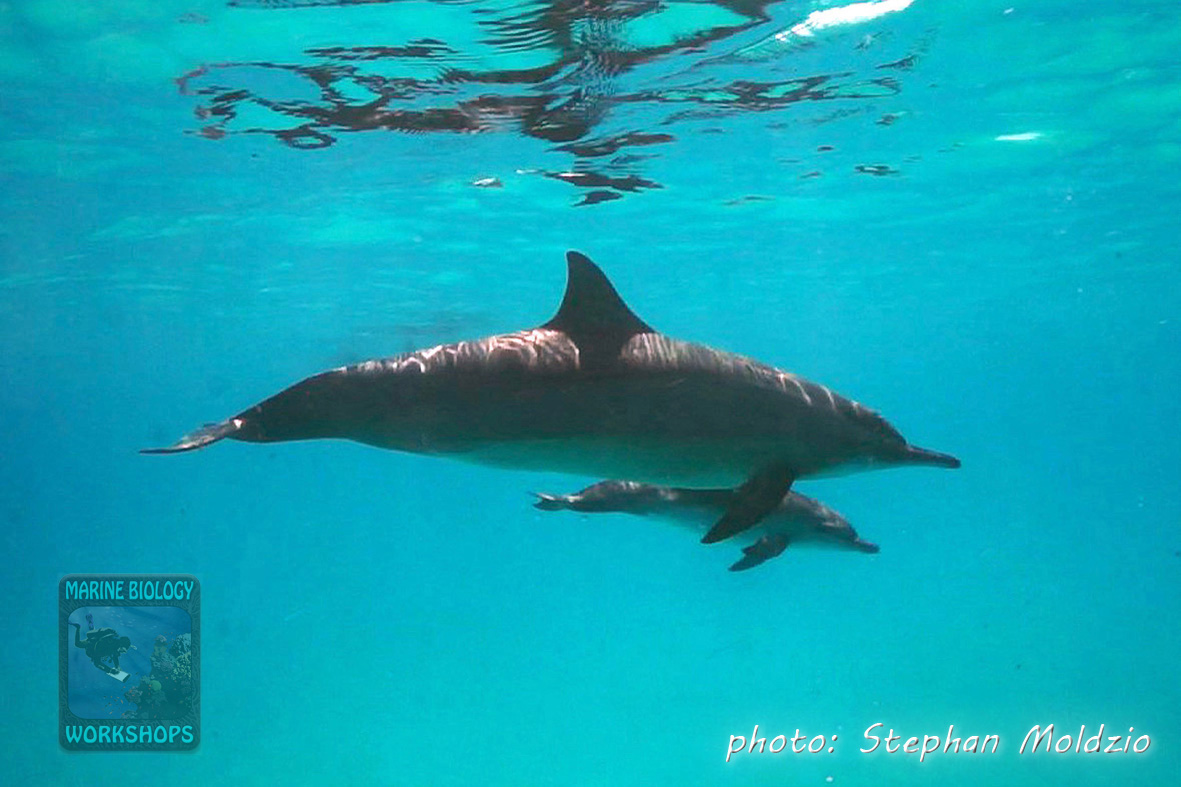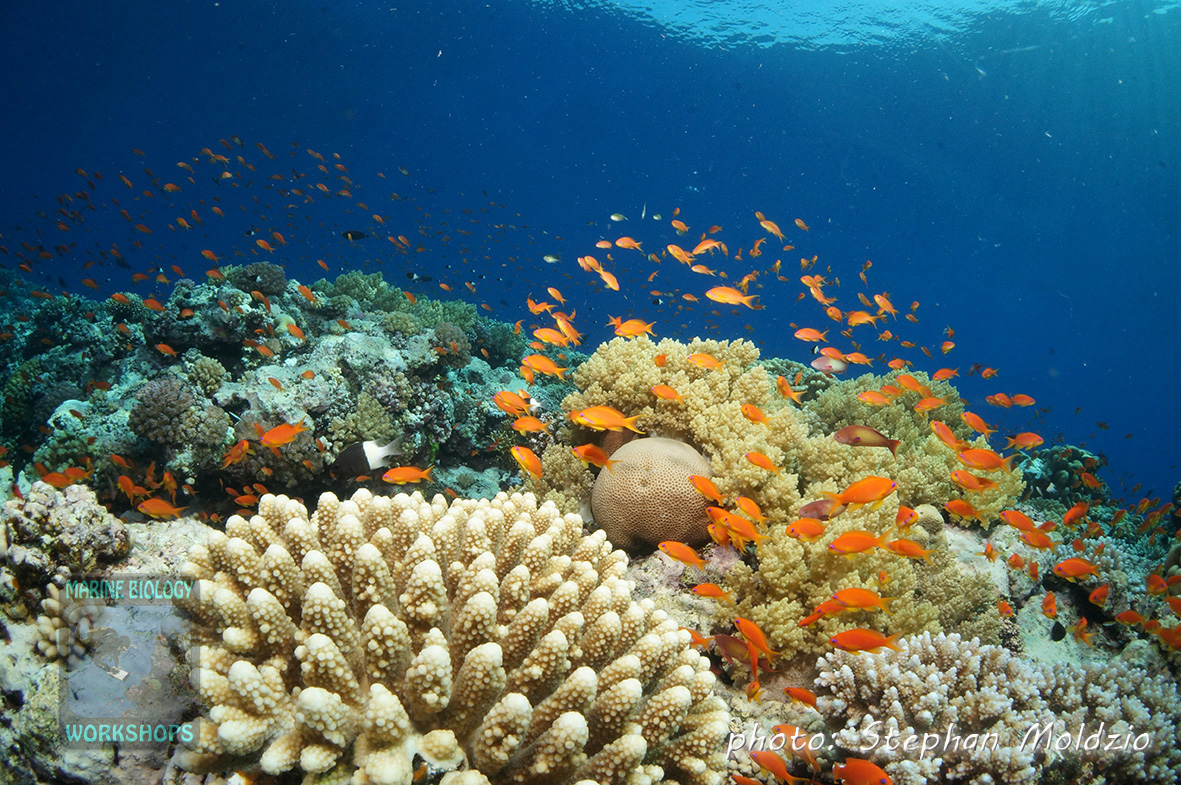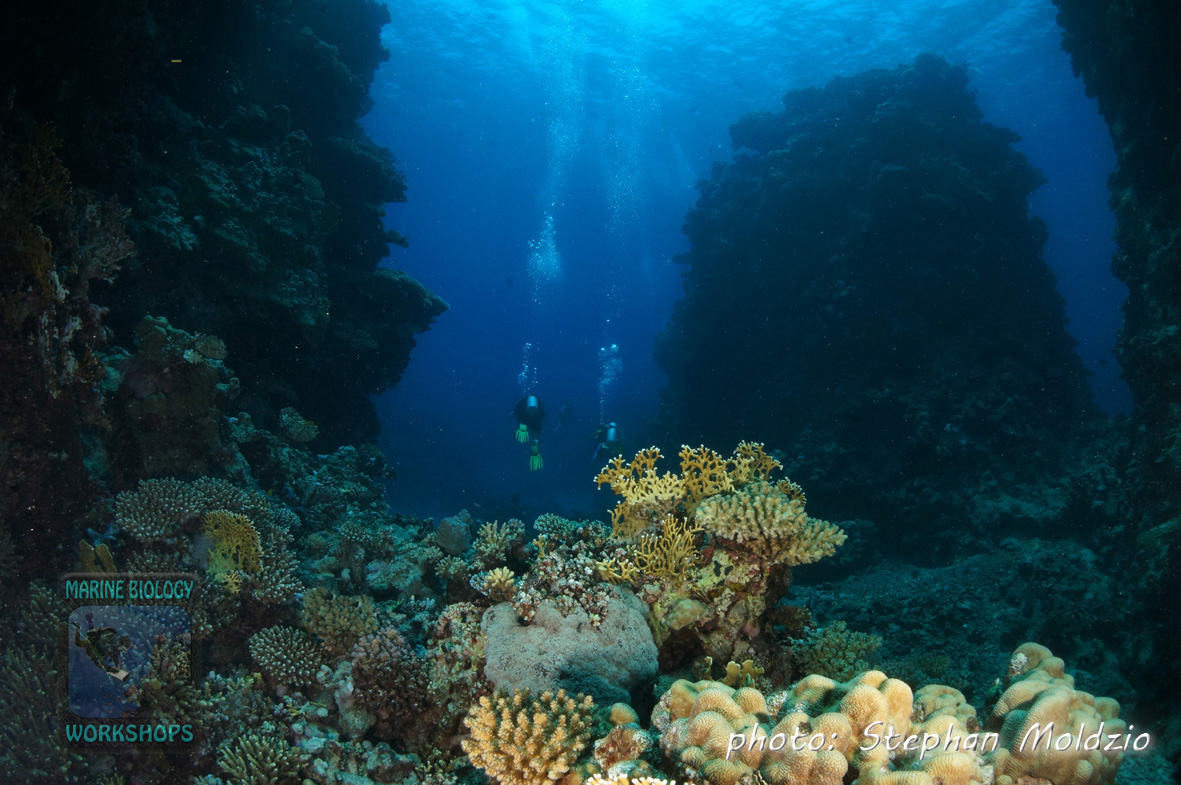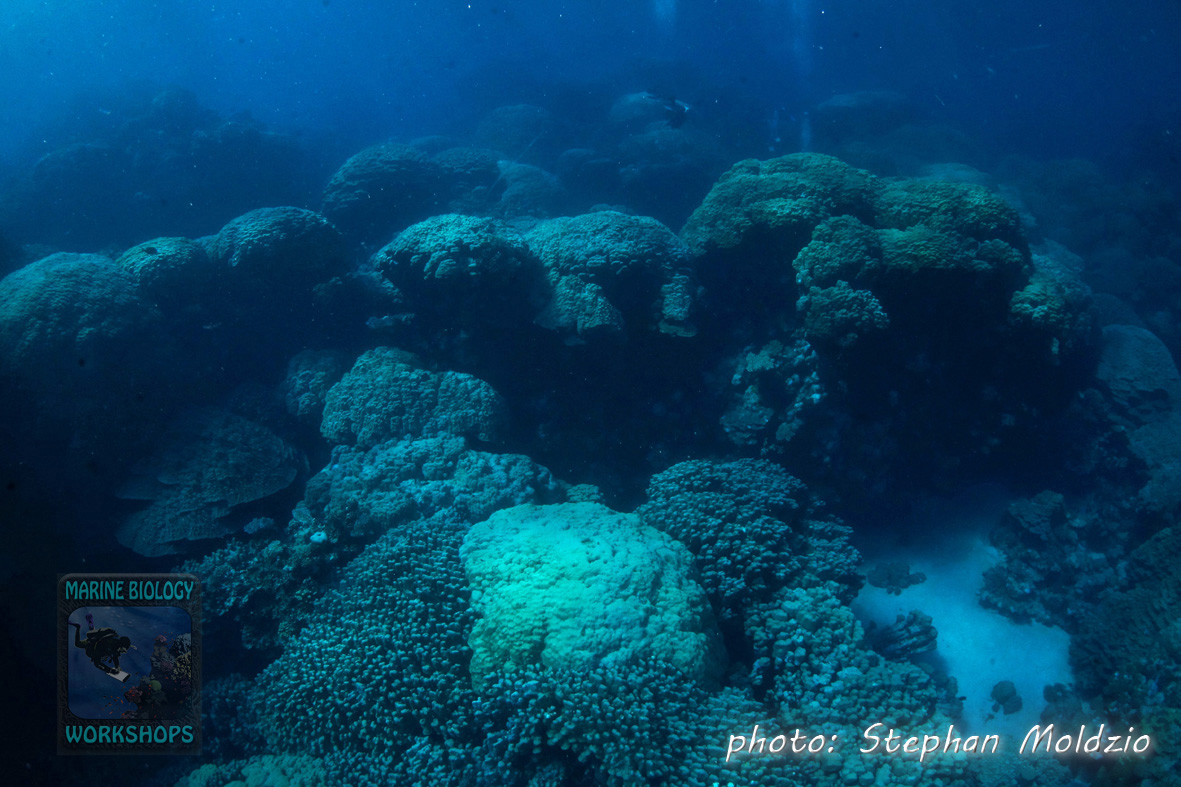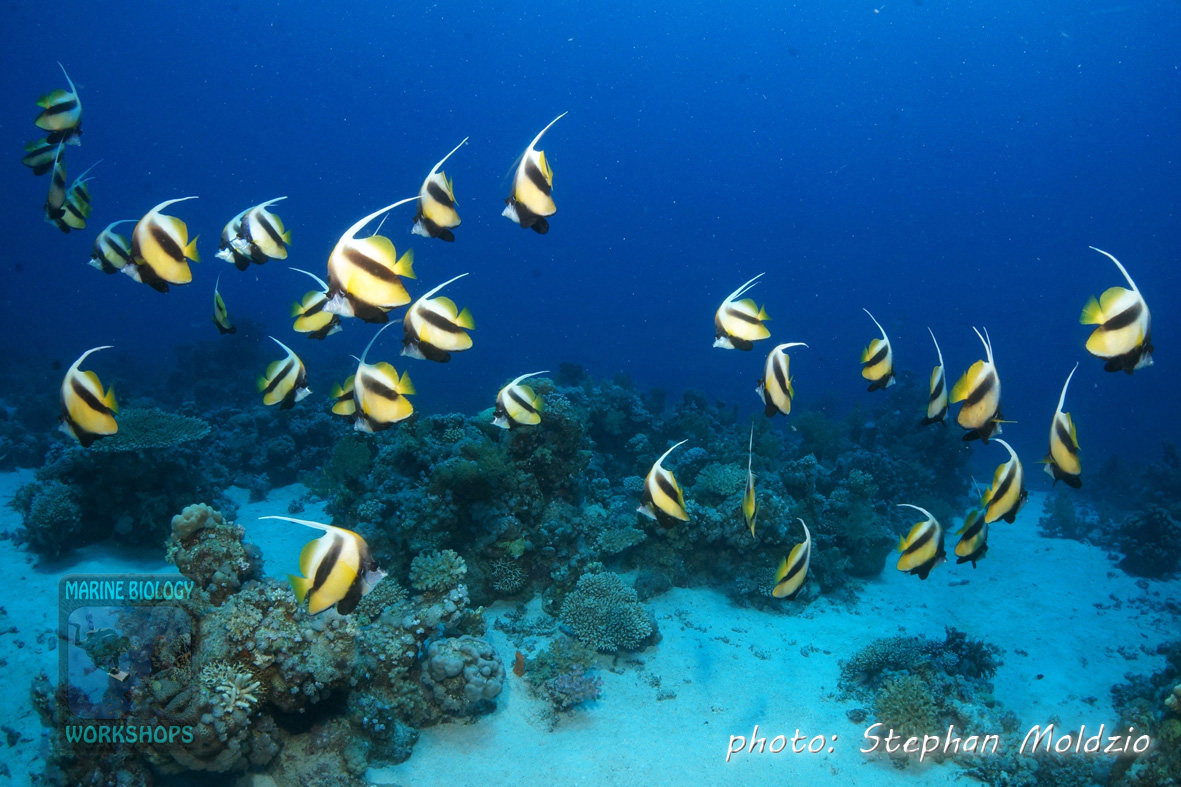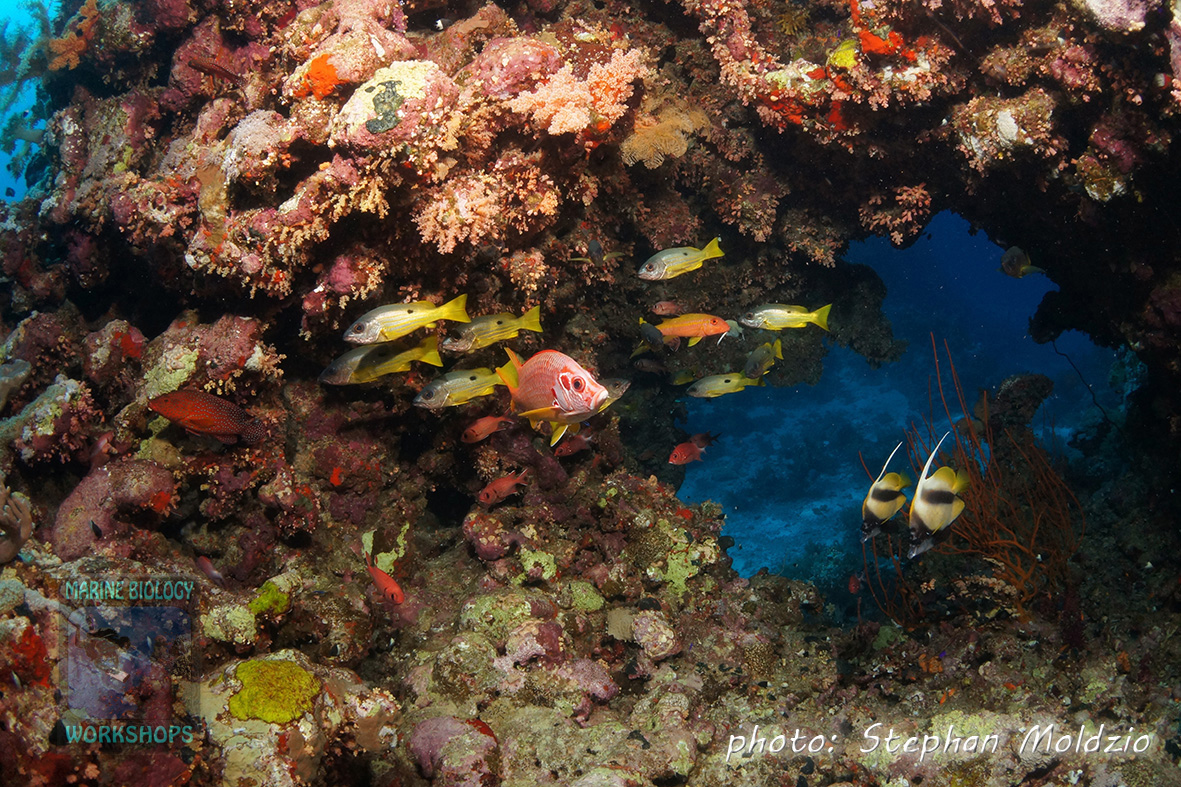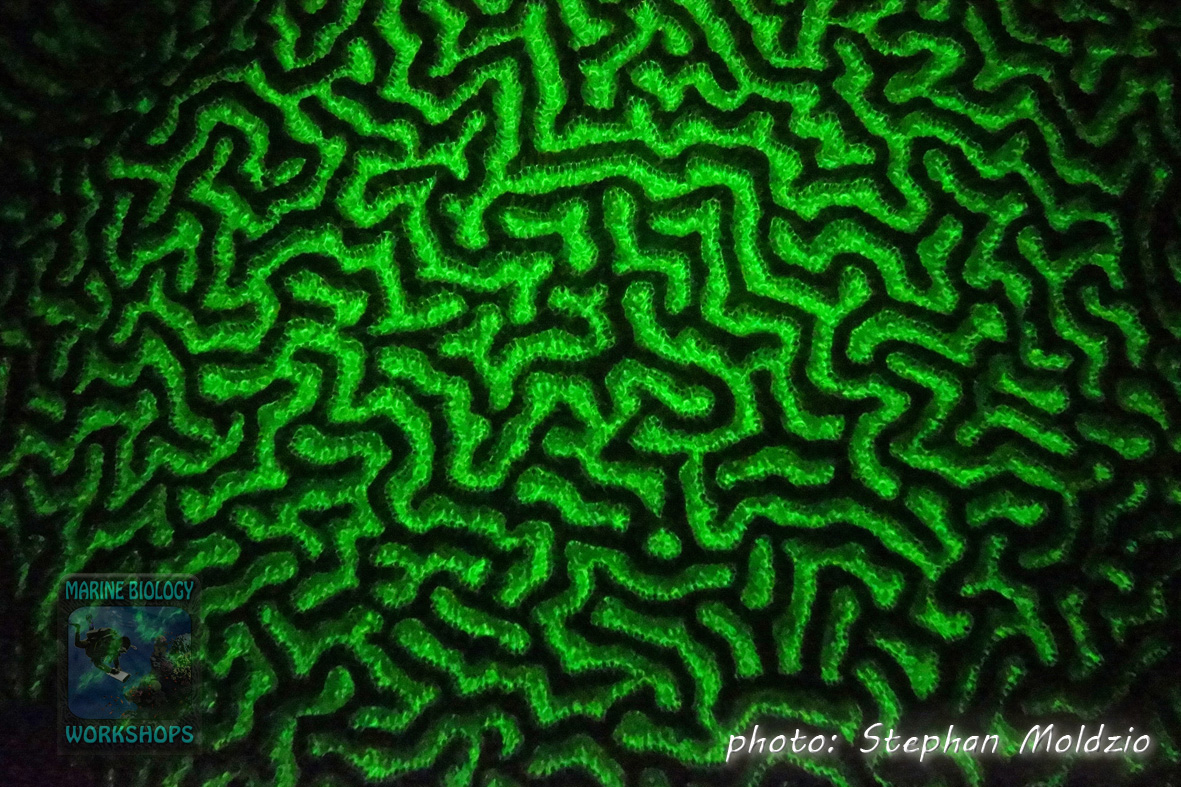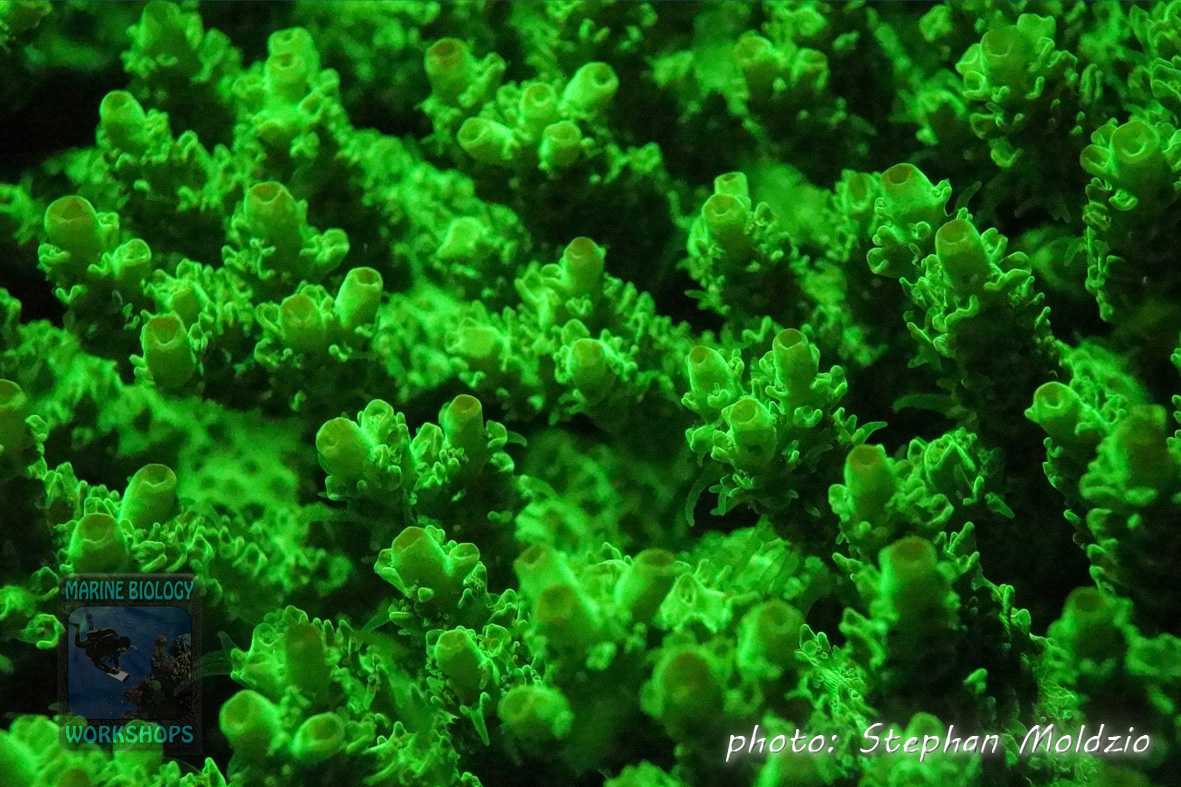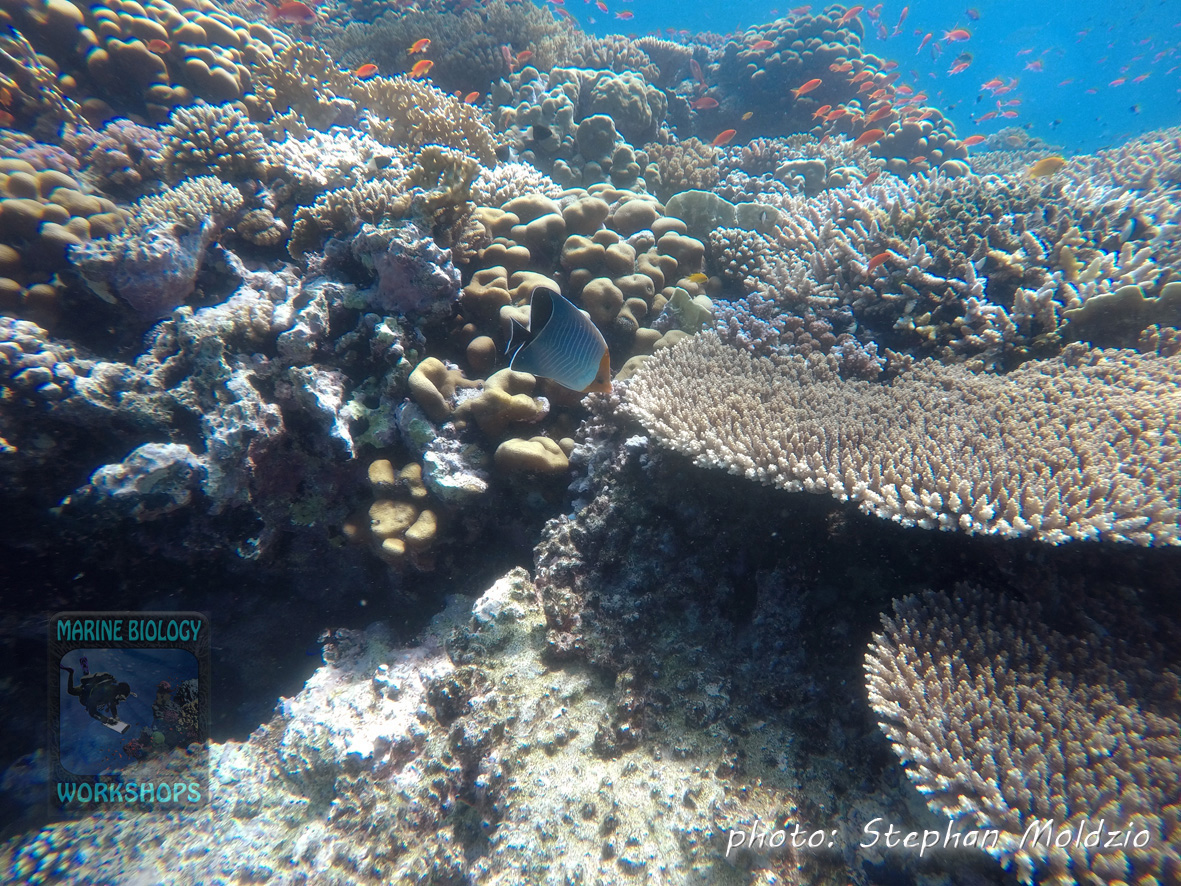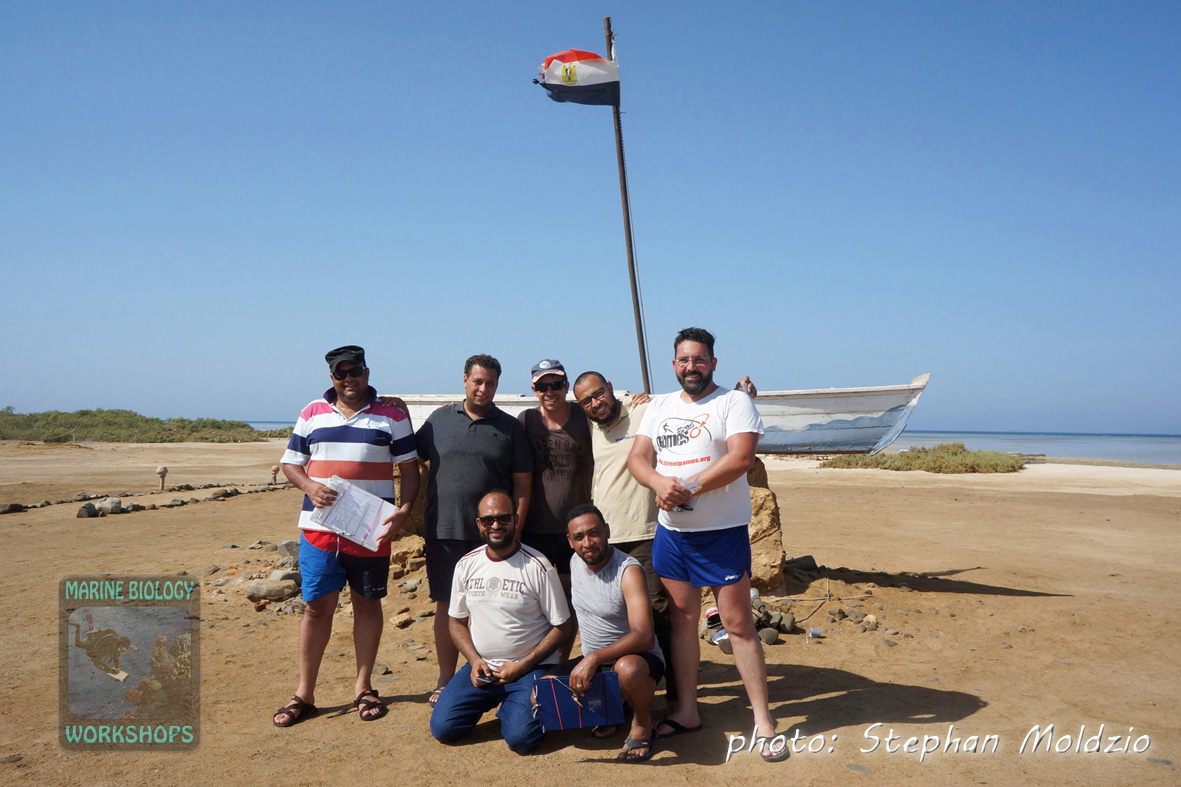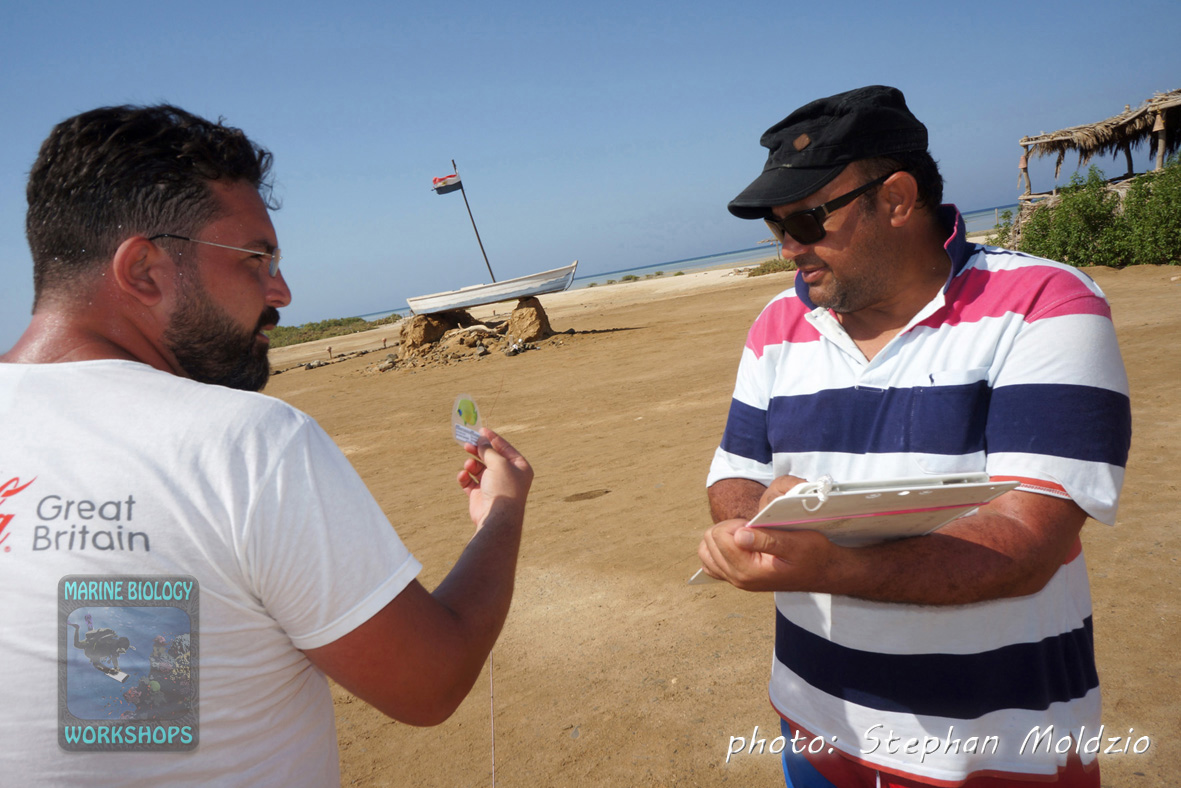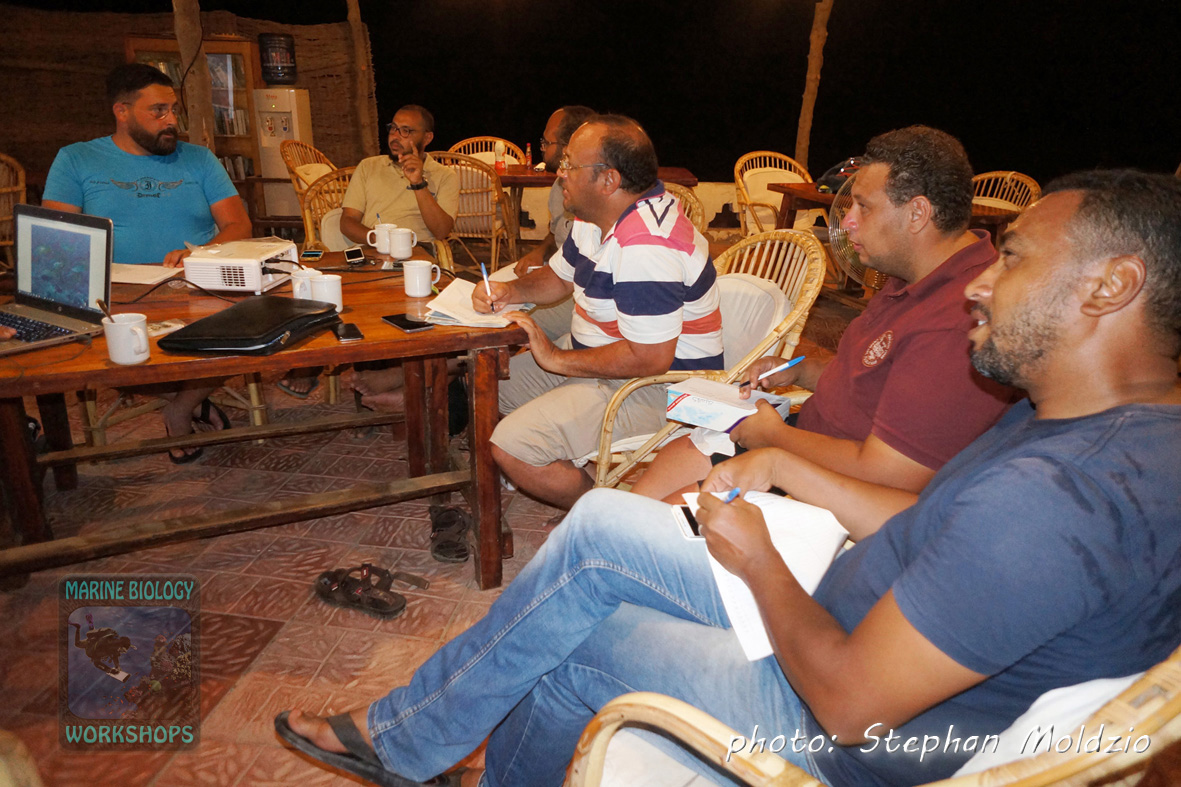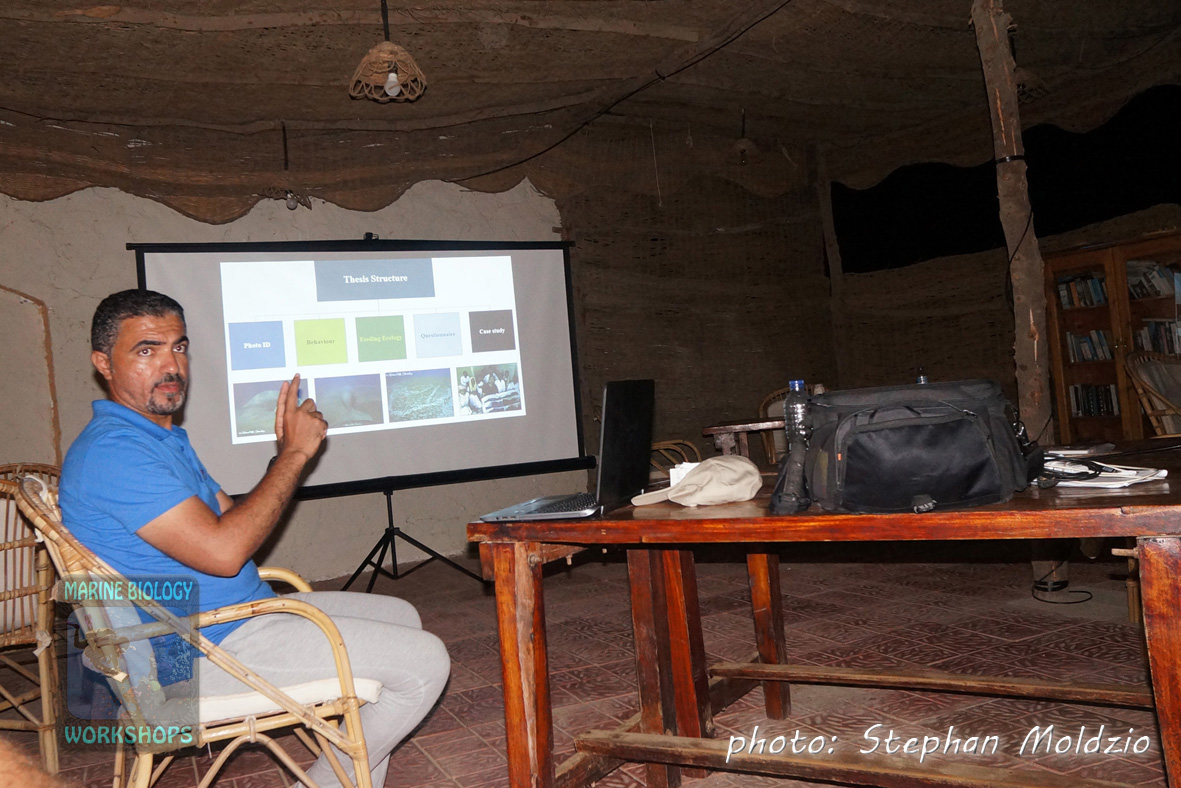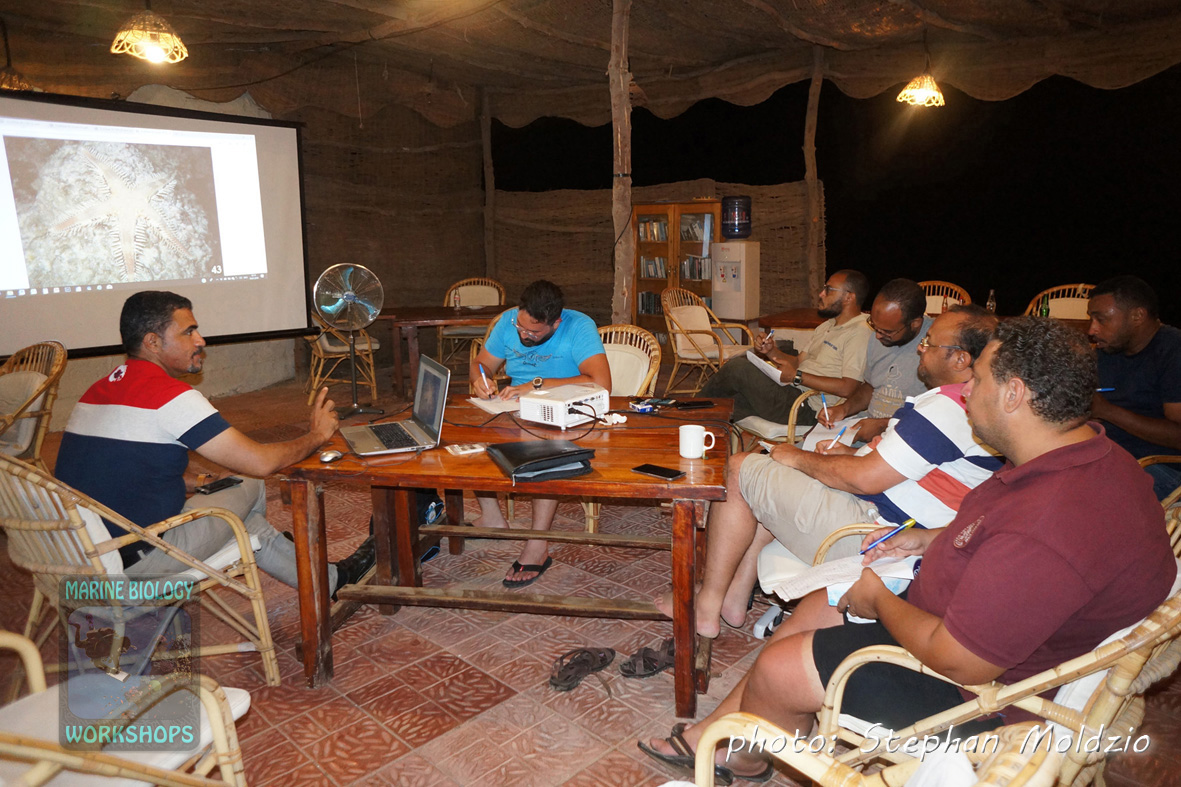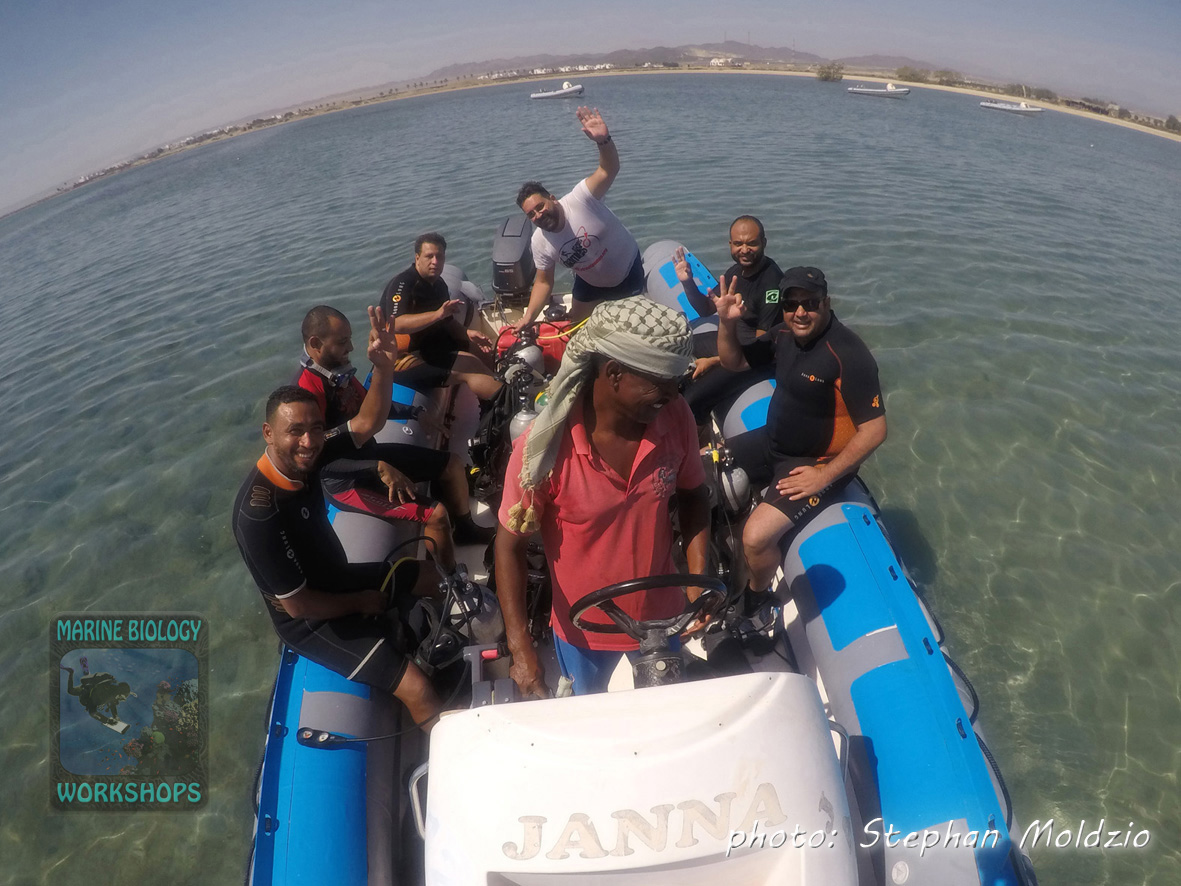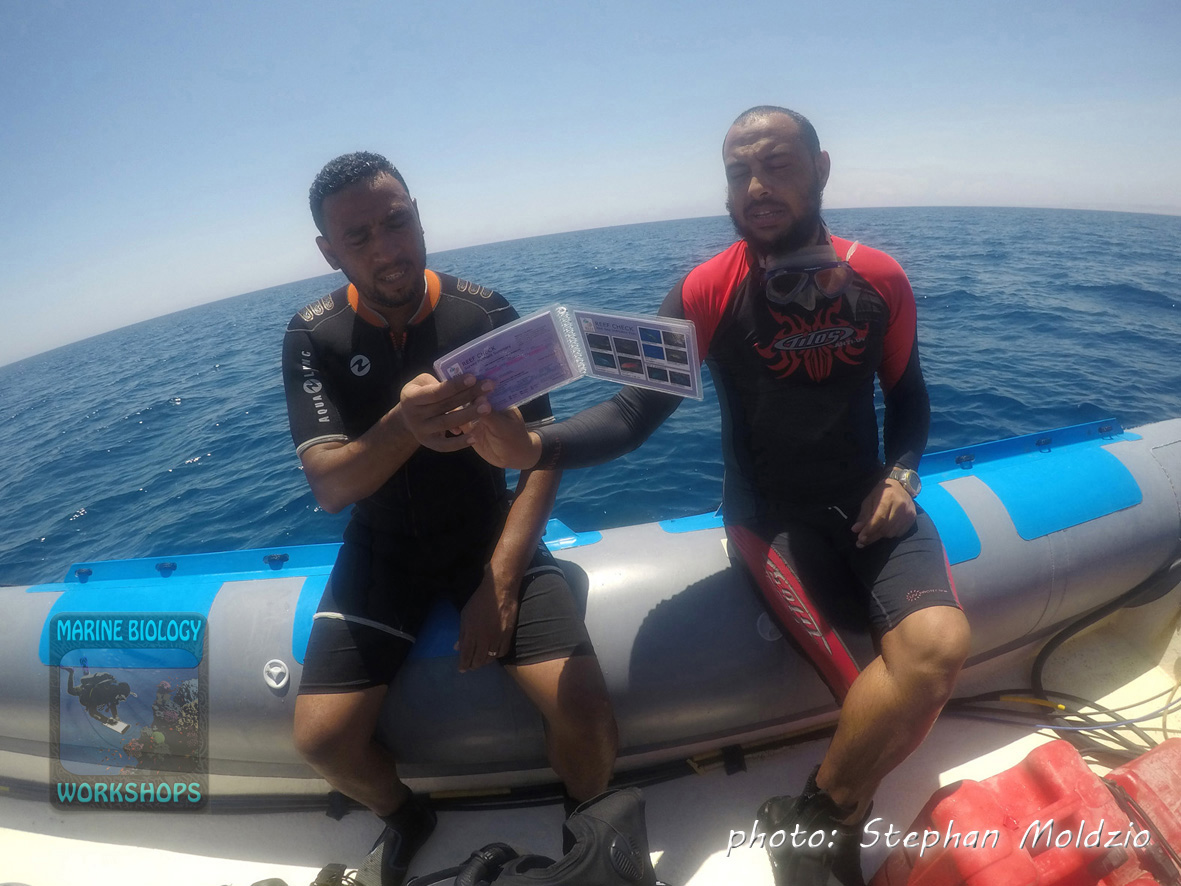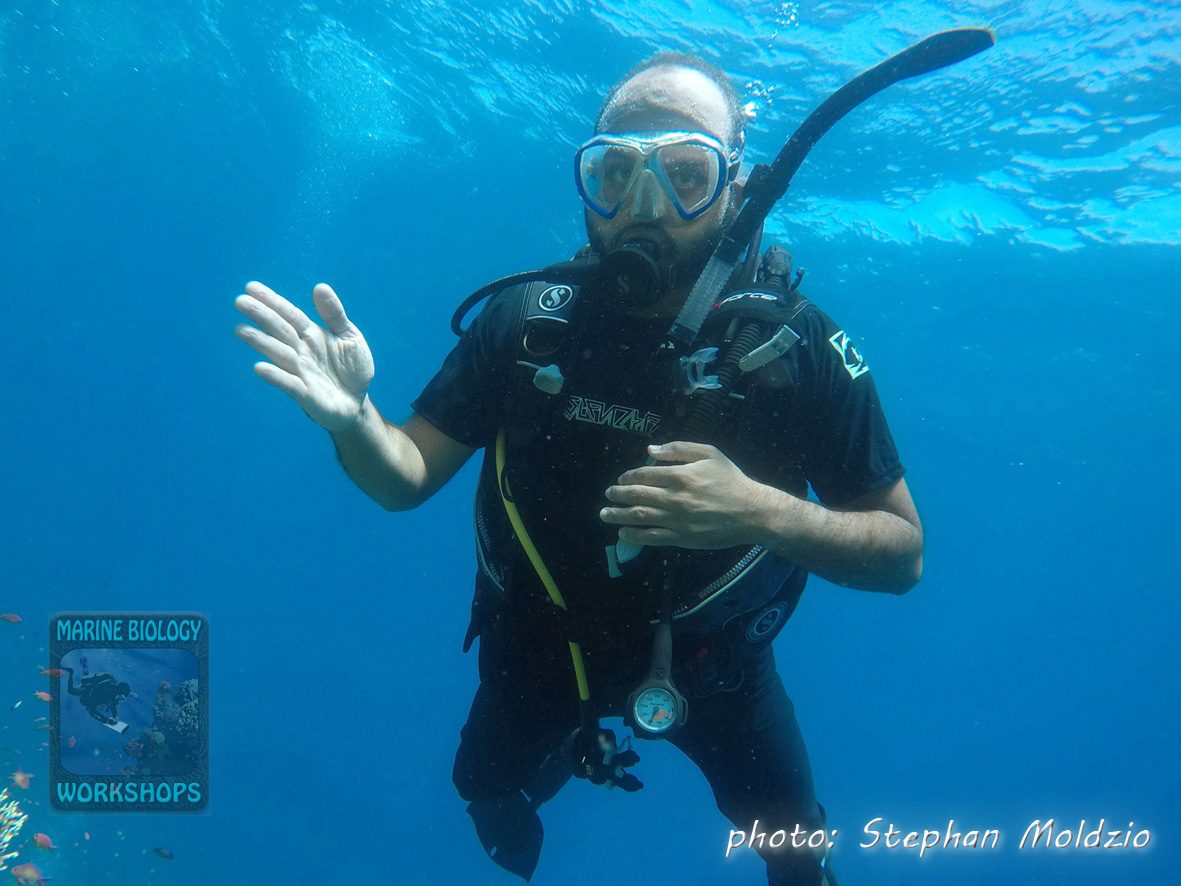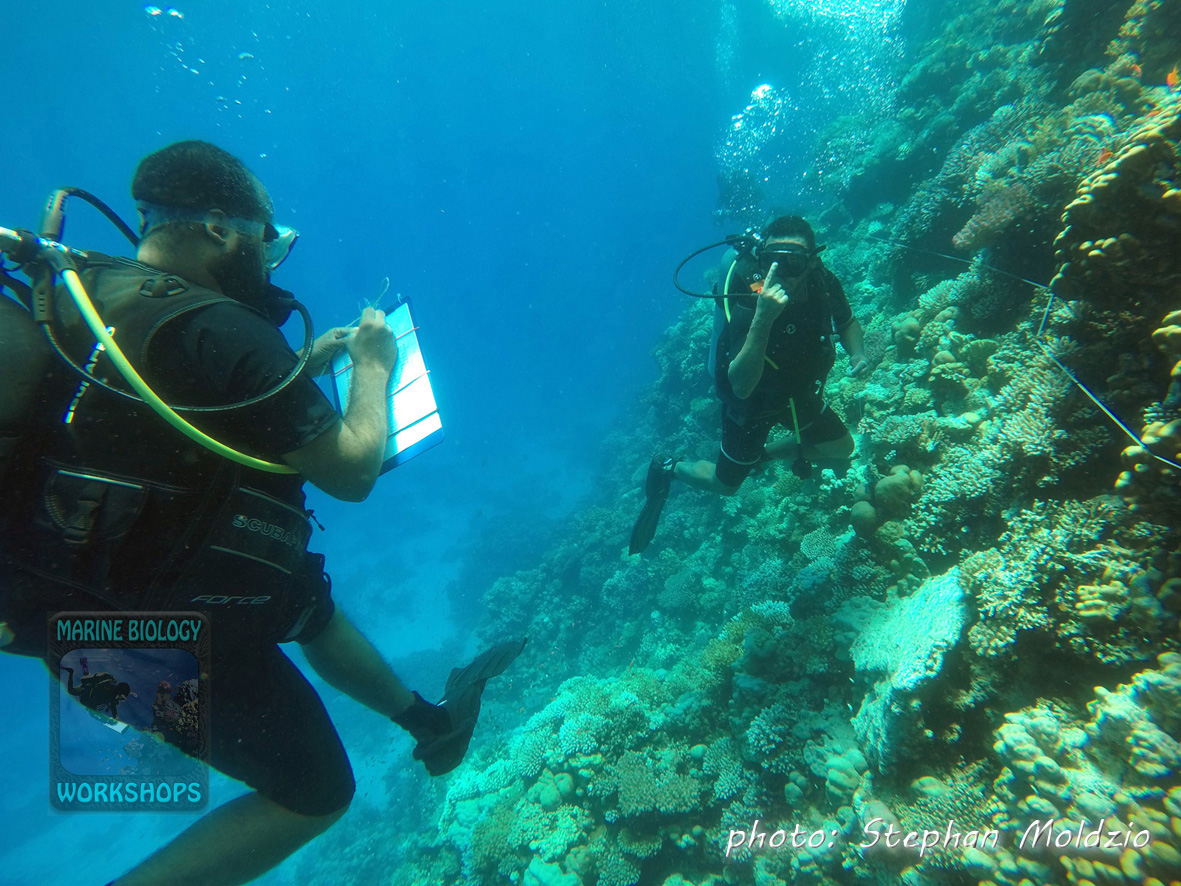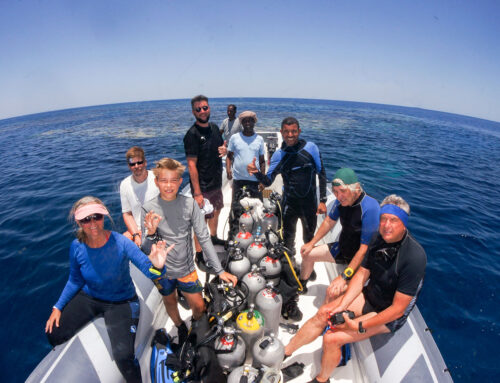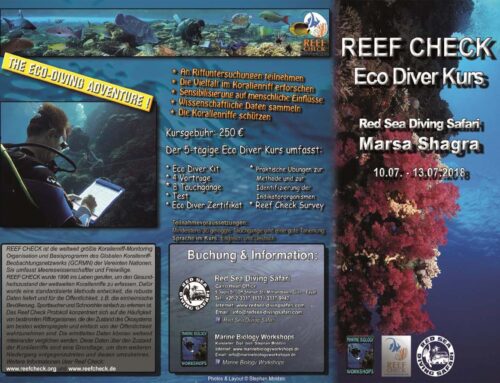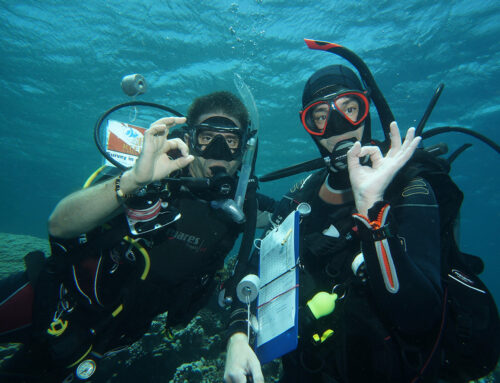In 2018 we´re in the tenth year of our Reef Check monitoring program, that Red Sea Diving Safari (RSDS) and @ReefCheckfoundation Team Scientist Stephan Moldzio started in 2009 to conduct regular surveys at the most important dive sites of RSDS.
This year we had a full program with two EcoDiver Courses along with two EcoDiver Trainer courses and five full Surveys, each along two depth contours, at Marsa Egla, Marsa Nakari North & South, Wadi Lahami “Torfa” exposed & sheltered.
Nine new Reef Check EcoDivers were successfully certified as well as three new EcoDiver Trainers. Congratulations to new EcoDivers Katrin Ester, Rainer Hoinka, Èric Jordà Molina, Abdallah Abdelhamid, Abdelrahman Mohssen, Ahmed Galal , Ayman Nasr, Khaled Mohammed Amin, Mahmoud Saber Ahmed Abdelhafez, and new EcoDiver Trainers Elke Tinhofer, Gottfried Tinhofer and Dr. Ahmed M. Shawky. Thank you all for your participation! 🙂
Many thanks to Red Sea Diving Safari, who has been sponsoring these activities for the last 10 years. It is really exceptional, that a dive operator runs its own long-term reef monitoring program and this shows that RSDS truly cares for the environment. Thank you for all the support of your great team!
(As a pioneer of sustainable tourism in Egypt, Red Sea Diving Safari has implemented an extensive environmental policy for many years, promotes ecofriendly practices, supports various initiatives, educates their guests and just recently installed a photovoltaic plant to switch to renewable energies step by step. à separate report about RSDS, all 3 villages)
We started at Marsa Shagra, the northern-most and biggest village of Red Sea Diving Safari. The house reef is well-known for its around 300 fish species, high abundance of large fish and some long-year inhabitants, like the big brown-marbeled grouper (Epinephelus fuscoguttatus), the red snapper “Fatima” (Lutjanus bohar), or the large “north-reef giant moray” (Gymnothorax javanicus), that you can meet during nearly all night dives, when it is hunting for sleeping fish deep inside the reef´s cracks and crevasses.
Of course we visited “Shaab Shagra”, an impressive offshore reef rising from more than 100m depth and around 15km from Marsa Shagra. This world-famous dive spot is likely better known as “Elphinstone reef”. Here we dove along the east wall and later on, enjoyed the rich soft coral gardens as well as the “wall of anthias” on the south plateau at around 35m depth. One hawksbill turtle and a thresher shark passed by, and at the end of our dive, an oceanic white-tip showed up.
Reef Check EcoDiver course and first survey at Marsa Egla
In the evening before the EcoDiver course, Stephan gave an open presentation to all guests about “REEF CHECK: Coral Reef Monitoring Network Worldwide – 10 years of Reef Monitoring at Red Sea Diving Safari”.
Next morning the course started and in the following three days we nicely went through the theory combined with practical exercises and training dives. On the last day we had a beach exercise to practice the Reef Check method on land, as a rehearsal before the real survey.
Gottfried and Elke assisted the course and took over certain parts. It was their third Reef Check and now, as certified Reef Check EcoDiver Trainers, they can run their own courses to spread the Reef Check method.
In the evening we met at the Bawadi Bedouin Café to look back at an eventful day, talking ocean tales, watch the starry sky, or drink one or three or five Gabbana (strong Arabic coffee, you should ALWAYS consume in uneven numbers!). And you get the world’s best Shisha here…
On the next day, we went for our first survey at Marsa Egla.
As in 2010 and 2012, we recorded no big fishes, only two medium sized groupers within both depth contours. Instead we found even more lost fishing lines, knowing that this bay is quite intensely fished. Likely this is because there is no hotel at this shallow Marsa, and because the beach is absolutely open to the public and very easily accessible to the main road.
Next stop: Marsa Nakari
The next day we moved south to Marsa Nakari, to conduct two more surveys at the house reef. Marsa Nakari is a calm and intimate village with fantastic offshore reefs on its doorstep. Besides this it has a really nice house reef, especially the southern side exhibits some impressive canyons and formations.
We surveyed both sides of the house reef for the fifth time, with the 100m transect lines starting from the corner of the bay and going off the exposed side of the fringing reef, in north and south directions.
At Marsa Nakari North, for example, we found 7.5 times more groupers and 9.5 times more snappers than in Marsa Egla and this “snapshot result” just echoes the findings of previous surveys in the past years.
On our only “free day” at Marsa Nakari, we took the opportunity to dive the incredible reefs of “Habili Ghadeer” and the just recently discovered new site “Om Halhala”.
At Habili Ghadeer we encountered a pod of spinner dolphins (Stenella longirostris) of at least 45 individuals (photo record). A very personal encounter: A mother dolphin and her baby, cheek to cheek, passed by very closely, presumably to show the baby those clumsy, awkward, crazy creatures with masks and artificial fins, which are frequently visiting their space to live… Lesson learned for (successful) dolphin encounters: Stay calm and relaxed – and they will come… Frantic movements are just counterproductive. Dolphins are very curious animals and much, much better underwater than even the best human swimmer, freediver, … so just keep your hope and let them do the first step to become acquainted with you. (Nice detail: within a 45 second video the baby swam three-times to the surface to gasp for breathe :-))
Final stop: Wadi Lahami
In the evening of the same day, we moved down to Wadi Lahami, the southern-most village of Red Sea Diving Safari. Wadi Lahami is located south of Wadi El Gemal National Park, directly beneath a large mangrove area, that is home for many seabirds, like osprey, herons, terns and sea gulls.
Thus, it’s the perfect place for diving, bird watching, kite surfing or just relaxing at a very remote and unique place.
Here, we dived some of the most beautiful Offshore Reefs of Southern Egypt, such as Maksour, Satayah (Dolphin Reef), Shaab Malahi, Shaab Angel or Shaab Claudia with a great marine life and huge coral formations.
Shaab Angel consists of impressive formations of massive, Porites block corals, that appear like a marine stronghold to resist the power of the oceans. The visibility is around 40m or even more, an indication for a moderate biological productivity and accordingly we observed not too much fish.
The reefs Daisy and Shabrour which are located within zone 1 of Wadi Lahami´s dive sites, are really true jewels! Here, the visibility is somewhat lower compared with those offshore sites, but the high plankton availability also induces an incredible richness of fish and coral!
Huge swarms of anthias, fusiliers, silversides, and on the other side large, hunting schools of jacks, barracuda and snappers. It is truly amazing to see all this richness – what an overflow of life!
On the shallow top of Daisy which displays a coral coverage of clearly more than 80% (!), we also found the rare Orangeface butterfly fish (Chaetodon larvatus), that feeds exclusively on Acropora polyps and is only found at coral rich reefs. And the Harlequin filefish (Oxymonacanthus halli). Both species do not occur at Marsa Shagra or Marsa Nakari.
At Wadi Lahami we also had a stunning fluorescent night dive. Using blue light and yellow filter masks – most corals glow in neon green! Actually, this fluorescence appearance is caused by certain pigments which shall protect the coral from ultraviolet irradiance. This is not equal between corals – some are more bright than others, and some glow only very faintly! If you can distinguish between the different coral genera it is amazing to compare the intensity of their fluorescent glowing.
Èric Jordà Molina, the current European Rolex Scholar of the OUR WORLD-UNDERWATER SCHOLARSHIP SOCIETY (OWUSS), was lucky enough to encounter one of the four local Dugongs of Wadi Lahami house reef on his last night dive. “Suddenly something huge and white appeared out of the dark…!” Eric took part in the Reef Check EcoDiver course, Surveys and activities during these 2 weeks in all three villages of Red Sea Diving Safari, as part of his one-year diving education and experience in various fields and countries. It was Eric’s first time diving in Egypt and he was understandably overwhelmed by this great variety and richness of life in the beautiful Red Sea.
It was very interesting to meet and work with these dedicated guys whose daily work is to enforce the marine protected areas of Egypt. Everybody had a certain background, ranging from marine biologist, geologist, office worker to engineer for the mooring system. As Red Sea Rangers, they are conducting various monitoring methods in the course of their regular work. Now their goal was to become certified Reef Check EcoDivers, using the Reef Check method to collect specific data about the reef health and human impacts, and submit their data to the international database of Reef Check, that is publicly available at www.data.reefcheck.us
In this accelerated two-day course we went quite quickly through the species ID and theory and put the main focus on learning and correctly applying the method – and even quicker – especially after the remarkably Beach Exercise – we transformed into a very dynamic team and also had a lot of fun!
Dr. Ahmed M. Shawky, who took part in our Reef Check activities for the third time, assisted the course and held some presentations in Arabic language. Ahmed also completed the EcoDiver Trainer course and he is now set to run his own EcoDiver courses to certify more people in order to collect even more survey data in the future!
On the next day we conducted two full Surveys at Wadi Lahami house reef, one at the exposed site of the fringing reef and one at the sheltered area inside the lagoon. At the first survey Eric and Rainer teamed up with the rangers, thus we had 8 EcoDivers at work, while Ahmed and Stephan assisted and documented the Survey. Everything went like clockwork and so we successfully finished our this year’s goal to complete five full surveys at certain sites due to our monitoring schedule.
On the last evening at Wadi Lahami, Dr. Ahmed Shawky gave an excellent presentation about his Egyptian Dugong research & PhD thesis and explained a lot of intimate details out of the amazing life of these gentle sea mammals. Do you know what Dugongs do all day long? Then you should sign up in Ahmed´s just recently approved PADI distinctive specialty course “Dugong Conservation Diver” !
Finally, a fantastic two-week journey through all three villages of RSDS was coming to an end – with a lot of impressions, experiences, photos and new dive friends. Thanks again to all people involved – it was a pleasure being with you, see you hopefully again next year for some more Reef Check Surveys and diving adventures!
For anyone interested in joining our Reef Check activites next year, stay tuned for course dates and schedules which will be published soon on www.redsea-divingsafari.com and www.marinebiologyworkshops.com, as well as on their Facebook pages. The EcoDiver course is suitable for all levels of diver with reasonable buoyancy, and of course the surveys are open to participants of the course or those who are already certified eco divers. For more information contact Red Sea Diving Safari, Marine Biology Workshops or one of the RSDS partner travel agencies in your country.
